Product Description
Basic Info
|
ANSI NO: |
180-2R |
DIN/ISO NO: |
36A-2 |
|
Pitch (mm): |
57.1500 |
Roller Diameter(mm): |
35.71 |
|
Inner Plate Width (mm): |
35.48 |
Average Tensile Strength: |
722.2KN |
|
Pin Diameter(mm): |
17.46 |
Plate Thickness (mm): |
7.20 |
|
Weight / Meter (kgs/m): |
13.45 |
Chain Size: |
5F, 10F, 5Meters |
|
Origin: |
HangZhou China |
HS Code: |
7315119000 |
1. Providing 10 series more than 8000 models of chains,Heavy duty engineering chains, oil field chains, heavy duty port crane chains, metallurgy conveyor chains, ultra-high tension escalator chains, mining chains, etc, and customized solutions.
2. More than 80% of our roller chain are exported to all over the world, We are serving customers of top 5 of world famous manufacturers , and more than 90% of our turnover are from the cooperation with the manufacturers in the world.
3. Having advanced online inspection for automatic assembly lines.
4. Having nation level Enterprise Technology Center, we cost no less than 13% of our annual turnover investment in R&D each year.
5. Having our own Standardization Management Committee in our company, and participated in the formulation and modification of the roller chain standards of the People’s Republic of China.
SMCC roller chain is 1 of the most widely used and welcome products in the market. Its continuous innovative development is suitable to be the solutions for many conditions, standard roller chains, motorcycle driving chain, O-ring motorcycle chain, high strength roller chain, conveyor chains, agricultural driving chain, galvanized chain, nickel-plated chain, lubrication-free chain and oilfield chain etc
Our CHINAMFG chain was produced by machinery processing from raw materials to finished products and a full set of quality testing equipment. Mechanical processing equipment include grinding machines, high speed punching machines, milling machines, high speed automatic rolling and assembling machine. Heat treatment was processed by continuous mesh belt conveyor furnace, mesh belt conveyor annealing furnace, advanced central control system of heat treatment, rotary CHINAMFG for chain component heat treatment, which ensure the stability and consistency of the key function of chain components.
We are the best suppliers of Chinese largest palletizing robot enterprises. These items are durable quality with affordable prices, replace of Japan chains, ZheJiang chains exported to Europe, America, Asia and other countries and regions.
Workshop Show
ROLLER CHAIN
Roller chain or bush roller chain is the type of chain drive most commonly used for transmission of mechanical power on many kinds of domestic, industrial and agricultural machinery, including conveyors, wire- and tube-drawing machines, printing presses, cars, motorcycles, and bicycles. It consists of a series of short cylindrical rollers held together by side links. It is driven by a toothed wheel called a sprocket. It is a simple, reliable, and efficient means of power transmission.
CONSTRUCTION OF THE CHAIN
Two different sizes of roller chain, showing construction.
There are 2 types of links alternating in the bush roller chain. The first type is inner links, having 2 inner plates held together by 2 sleeves or bushings CHINAMFG which rotate 2 rollers. Inner links alternate with the second type, the outer links, consisting of 2 outer plates held together by pins passing through the bushings of the inner links. The “bushingless” roller chain is similar in operation though not in construction; instead of separate bushings or sleeves holding the inner plates together, the plate has a tube stamped into it protruding from the hole which serves the same purpose. This has the advantage of removing 1 step in assembly of the chain.
The roller chain design reduces friction compared to simpler designs, resulting in higher efficiency and less wear. The original power transmission chain varieties lacked rollers and bushings, with both the inner and outer plates held by pins which directly contacted the sprocket teeth; however this configuration exhibited extremely rapid wear of both the sprocket teeth, and the plates where they pivoted on the pins. This problem was partially solved by the development of bushed chains, with the pins holding the outer plates passing through bushings or sleeves connecting the inner plates. This distributed the wear over a greater area; however the teeth of the sprockets still wore more rapidly than is desirable, from the sliding friction against the bushings. The addition of rollers surrounding the bushing sleeves of the chain and provided rolling contact with the teeth of the sprockets resulting in excellent resistance to wear of both sprockets and chain as well. There is even very low friction, as long as the chain is sufficiently lubricated. Continuous, clean, lubrication of roller chains is of primary importance for efficient operation as well as correct tensioning.
LUBRICATION
Many driving chains (for example, in factory equipment, or driving a camshaft inside an internal combustion engine) operate in clean environments, and thus the wearing surfaces (that is, the pins and bushings) are safe from precipitation and airborne grit, many even in a sealed environment such as an oil bath. Some roller chains are designed to have o-rings built into the space between the outside link plate and the inside roller link plates. Chain manufacturers began to include this feature in 1971 after the application was invented by Joseph Montano while working for Whitney Chain of Hartford, Connecticut. O-rings were included as a way to improve lubrication to the links of power transmission chains, a service that is vitally important to extending their working life. These rubber fixtures form a barrier that holds factory applied lubricating grease inside the pin and bushing wear areas. Further, the rubber o-rings prevent dirt and other contaminants from entering inside the chain linkages, where such particles would otherwise cause significant wear.[citation needed]
There are also many chains that have to operate in dirty conditions, and for size or operational reasons cannot be sealed. Examples include chains on farm equipment, bicycles, and chain saws. These chains will necessarily have relatively high rates of wear, particularly when the operators are prepared to accept more friction, less efficiency, more noise and more frequent replacement as they neglect lubrication and adjustment.
Many oil-based lubricants attract dirt and other particles, eventually forming an CHINAMFG paste that will compound wear on chains. This problem can be circumvented by use of a “dry” PTFE spray, which forms a solid film after application and repels both particles and moisture.
VARIANTS DESIGN
Layout of a roller chain: 1. Outer plate, 2. Inner plate, 3. Pin, 4. Bushing, 5. Roller
If the chain is not being used for a high wear application (for instance if it is just transmitting motion from a hand-operated lever to a control shaft on a machine, or a sliding door on an oven), then 1 of the simpler types of chain may still be used. Conversely, where extra strength but the smooth drive of a smaller pitch is required, the chain may be “siamesed”; instead of just 2 rows of plates on the outer sides of the chain, there may be 3 (“duplex”), 4 (“triplex”), or more rows of plates running parallel, with bushings and rollers between each adjacent pair, and the same number of rows of teeth running in parallel on the sprockets to match. Timing chains on automotive engines, for example, typically have multiple rows of plates called strands.
Roller chain is made in several sizes, the most common American National Standards Institute (ANSI) standards being 40, 50, 60, and 80. The first digit(s) indicate the pitch of the chain in eighths of an inch, with the last digit being 0 for standard chain, 1 for lightweight chain, and 5 for bushed chain with no rollers. Thus, a chain with half-inch pitch would be a #40 while a #160 sprocket would have teeth spaced 2 inches apart, etc. Metric pitches are expressed in sixteenths of an inch; thus a metric #8 chain (08B-1) would be equivalent to an ANSI #40. Most roller chain is made from plain carbon or alloy steel, but stainless steel is used in food processing machinery or other places where lubrication is a problem, and nylon or brass are occasionally seen for the same reason.
Roller chain is ordinarily hooked up using a master link (also known as a connecting link), which typically has 1 pin held by a horseshoe clip rather than friction fit, allowing it to be inserted or removed with simple tools. Chain with a removable link or pin is also known as cottered chain, which allows the length of the chain to be adjusted. Half links (also known as offsets) are available and are used to increase the length of the chain by a single roller. Riveted roller chain has the master link (also known as a connecting link) “riveted” or mashed on the ends. These pins are made to be durable and are not removable.
USE
An example of 2 ‘ghost’ sprockets tensioning a triplex roller chain system
Roller chains are used in low- to mid-speed drives at around 600 to 800 feet per minute; however, at higher speeds, around 2,000 to 3,000 feet per minute, V-belts are normally used due to wear and noise issues.
A bicycle chain is a form of roller chain. Bicycle chains may have a master link, or may require a chain tool for removal and installation. A similar but larger and thus stronger chain is used on most motorcycles although it is sometimes replaced by either a toothed belt or a shaft drive, which offer lower noise level and fewer maintenance requirements.
The great majority of automobile engines use roller chains to drive the camshaft(s). Very high performance engines often use gear drive, and starting in the early 1960s toothed belts were used by some manufacturers.
Chains are also used in forklifts using hydraulic rams as a pulley to raise and lower the carriage; however, these chains are not considered roller chains, but are classified as lift or leaf chains.
Chainsaw cutting chains superficially resemble roller chains but are more closely related to leaf chains. They are driven by projecting drive links which also serve to locate the chain CHINAMFG the bar.
Sea Harrier FA.2 ZA195 front (cold) vector thrust nozzle – the nozzle is rotated by a chain drive from an air motor
A perhaps unusual use of a pair of motorcycle chains is in the Harrier Jump Jet, where a chain drive from an air motor is used to rotate the movable engine nozzles, allowing them to be pointed downwards for hovering flight, or to the rear for normal CHINAMFG flight, a system known as Thrust vectoring.
WEAR
The effect of wear on a roller chain is to increase the pitch (spacing of the links), causing the chain to grow longer. Note that this is due to wear at the pivoting pins and bushes, not from actual stretching of the metal (as does happen to some flexible steel components such as the hand-brake cable of a motor vehicle).
With modern chains it is unusual for a chain (other than that of a bicycle) to wear until it breaks, since a worn chain leads to the rapid onset of wear on the teeth of the sprockets, with ultimate failure being the loss of all the teeth on the sprocket. The sprockets (in particular the smaller of the two) suffer a grinding motion that puts a characteristic hook shape into the driven face of the teeth. (This effect is made worse by a chain improperly tensioned, but is unavoidable no matter what care is taken). The worn teeth (and chain) no longer provides smooth transmission of power and this may become evident from the noise, the vibration or (in car engines using a timing chain) the variation in ignition timing seen with a timing light. Both sprockets and chain should be replaced in these cases, since a new chain on worn sprockets will not last long. However, in less severe cases it may be possible to save the larger of the 2 sprockets, since it is always the smaller 1 that suffers the most wear. Only in very light-weight applications such as a bicycle, or in extreme cases of improper tension, will the chain normally jump off the sprockets.
The lengthening due to wear of a chain is calculated by the following formula:
M = the length of a number of links measured
S = the number of links measured
P = Pitch
In industry, it is usual to monitor the movement of the chain tensioner (whether manual or automatic) or the exact length of a drive chain (one rule of thumb is to replace a roller chain which has elongated 3% on an adjustable drive or 1.5% on a fixed-center drive). A simpler method, particularly suitable for the cycle or motorcycle user, is to attempt to pull the chain away from the larger of the 2 sprockets, whilst ensuring the chain is taut. Any significant movement (e.g. making it possible to see through a gap) probably indicates a chain worn up to and beyond the limit. Sprocket damage will result if the problem is ignored. Sprocket wear cancels this effect, and may mask chain wear.
CHAIN STRENGTH
The most common measure of roller chain’s strength is tensile strength. Tensile strength represents how much load a chain can withstand under a one-time load before breaking. Just as important as tensile strength is a chain’s fatigue strength. The critical factors in a chain’s fatigue strength is the quality of steel used to manufacture the chain, the heat treatment of the chain components, the quality of the pitch hole fabrication of the linkplates, and the type of shot plus the intensity of shot peen coverage on the linkplates. Other factors can include the thickness of the linkplates and the design (contour) of the linkplates. The rule of thumb for roller chain operating on a continuous drive is for the chain load to not exceed a mere 1/6 or 1/9 of the chain’s tensile strength, depending on the type of master links used (press-fit vs. slip-fit)[citation needed]. Roller chains operating on a continuous drive beyond these thresholds can and typically do fail prematurely via linkplate fatigue failure.
The standard minimum ultimate strength of the ANSI 29.1 steel chain is 12,500 x (pitch, in inches)2. X-ring and O-Ring chains greatly decrease wear by means of internal lubricants, increasing chain life. The internal lubrication is inserted by means of a vacuum when riveting the chain together.
CHAIN STHangZhouRDS
Standards organizations (such as ANSI and ISO) maintain standards for design, dimensions, and interchangeability of transmission chains. For example, the following Table shows data from ANSI standard B29.1-2011 (Precision Power Transmission Roller Chains, Attachments, and Sprockets) developed by the American Society of Mechanical Engineers (ASME). See the references[8][9][10] for additional information.
ASME/ANSI B29.1-2011 Roller Chain Standard SizesSizePitchMaximum Roller DiameterMinimum Ultimate Tensile StrengthMeasuring Load25
| ASME/ANSI B29.1-2011 Roller Chain Standard Sizes | ||||
| Size | Pitch | Maximum Roller Diameter | Minimum Ultimate Tensile Strength | Measuring Load |
|---|---|---|---|---|
| 25 | 0.250 in (6.35 mm) | 0.130 in (3.30 mm) | 780 lb (350 kg) | 18 lb (8.2 kg) |
| 35 | 0.375 in (9.53 mm) | 0.200 in (5.08 mm) | 1,760 lb (800 kg) | 18 lb (8.2 kg) |
| 41 | 0.500 in (12.70 mm) | 0.306 in (7.77 mm) | 1,500 lb (680 kg) | 18 lb (8.2 kg) |
| 40 | 0.500 in (12.70 mm) | 0.312 in (7.92 mm) | 3,125 lb (1,417 kg) | 31 lb (14 kg) |
| 50 | 0.625 in (15.88 mm) | 0.400 in (10.16 mm) | 4,880 lb (2,210 kg) | 49 lb (22 kg) |
| 60 | 0.750 in (19.05 mm) | 0.469 in (11.91 mm) | 7,030 lb (3,190 kg) | 70 lb (32 kg) |
| 80 | 1.000 in (25.40 mm) | 0.625 in (15.88 mm) | 12,500 lb (5,700 kg) | 125 lb (57 kg) |
| 100 | 1.250 in (31.75 mm) | 0.750 in (19.05 mm) | 19,531 lb (8,859 kg) | 195 lb (88 kg) |
| 120 | 1.500 in (38.10 mm) | 0.875 in (22.23 mm) | 28,125 lb (12,757 kg) | 281 lb (127 kg) |
| 140 | 1.750 in (44.45 mm) | 1.000 in (25.40 mm) | 38,280 lb (17,360 kg) | 383 lb (174 kg) |
| 160 | 2.000 in (50.80 mm) | 1.125 in (28.58 mm) | 50,000 lb (23,000 kg) | 500 lb (230 kg) |
| 180 | 2.250 in (57.15 mm) | 1.460 in (37.08 mm) | 63,280 lb (28,700 kg) | 633 lb (287 kg) |
| 200 | 2.500 in (63.50 mm) | 1.562 in (39.67 mm) | 78,175 lb (35,460 kg) | 781 lb (354 kg) |
| 240 | 3.000 in (76.20 mm) | 1.875 in (47.63 mm) | 112,500 lb (51,000 kg) | 1,000 lb (450 kg |
For mnemonic purposes, below is another presentation of key dimensions from the same standard, expressed in fractions of an inch (which was part of the thinking behind the choice of preferred numbers in the ANSI standard):
| Pitch (inches) | Pitch expressed in eighths |
ANSI standard chain number |
Width (inches) |
|---|---|---|---|
| 1⁄4 | 2⁄8 | 25 | 1⁄8 |
| 3⁄8 | 3⁄8 | 35 | 3⁄16 |
| 1⁄2 | 4⁄8 | 41 | 1⁄4 |
| 1⁄2 | 4⁄8 | 40 | 5⁄16 |
| 5⁄8 | 5⁄8 | 50 | 3⁄8 |
| 3⁄4 | 6⁄8 | 60 | 1⁄2 |
| 1 | 8⁄8 | 80 | 5⁄8 |
Notes:
1. The pitch is the distance between roller centers. The width is the distance between the link plates (i.e. slightly more than the roller width to allow for clearance).
2. The right-hand digit of the standard denotes 0 = normal chain, 1 = lightweight chain, 5 = rollerless bushing chain.
3. The left-hand digit denotes the number of eighths of an inch that make up the pitch.
4. An “H” following the standard number denotes heavyweight chain. A hyphenated number following the standard number denotes double-strand (2), triple-strand (3), and so on. Thus 60H-3 denotes number 60 heavyweight triple-strand chain.
A typical bicycle chain (for derailleur gears) uses narrow 1⁄2-inch-pitch chain. The width of the chain is variable, and does not affect the load capacity. The more sprockets at the rear wheel (historically 3-6, nowadays 7-12 sprockets), the narrower the chain. Chains are sold according to the number of speeds they are designed to work with, for example, “10 speed chain”. Hub gear or single speed bicycles use 1/2″ x 1/8″ chains, where 1/8″ refers to the maximum thickness of a sprocket that can be used with the chain.
Typically chains with parallel shaped links have an even number of links, with each narrow link followed by a broad one. Chains built up with a uniform type of link, narrow at 1 and broad at the other end, can be made with an odd number of links, which can be an advantage to adapt to a special chainwheel-distance; on the other side such a chain tends to be not so strong.
Roller chains made using ISO standard are sometimes called as isochains.
WHY CHOOSE US
1. Reliable Quality Assurance System
2. Cutting-Edge Computer-Controlled CNC Machines
3. Bespoke Solutions from Highly Experienced Specialists
4. Customization and OEM Available for Specific Application
5. Extensive Inventory of Spare Parts and Accessories
6. Well-Developed CHINAMFG Marketing Network
7. Efficient After-Sale Service System
The 219 sets of advanced automatic production equipment provide guarantees for high product quality. The 167 engineers and technicians with senior professional titles can design and develop products to meet the exact demands of customers, and OEM customizations are also available with us. Our sound global service network can provide customers with timely after-sales technical services.
We are not just a manufacturer and supplier, but also an industry consultant. We work pro-actively with you to offer expert advice and product recommendations in order to end up with a most cost effective product available for your specific application. The clients we serve CHINAMFG range from end users to distributors and OEMs. Our OEM replacements can be substituted wherever necessary and suitable for both repair and new assemblies.
| Production Scope: | Parts Production Line |
|---|---|
| Condition: | New |
| Automation: | Automation |
| Samples: |
US$ 30/Meter
1 Meter(Min.Order) | Order Sample |
|---|
| Customization: |
Available
| Customized Request |
|---|
.shipping-cost-tm .tm-status-off{background: none;padding:0;color: #1470cc}
|
Shipping Cost:
Estimated freight per unit. |
about shipping cost and estimated delivery time. |
|---|
| Payment Method: |
|
|---|---|
|
Initial Payment Full Payment |
| Currency: | US$ |
|---|
| Return&refunds: | You can apply for a refund up to 30 days after receipt of the products. |
|---|


Can car parking chains be retrofitted into existing parking facilities to upgrade their security measures?
Yes, car parking chains can be retrofitted into existing parking facilities to upgrade their security measures and access control. Retrofitting parking chains is a practical and cost-effective solution for improving security without the need for major infrastructure changes. Here’s how it can be done:
1. Site Assessment: Conduct a thorough site assessment to identify suitable locations for installing the parking chains. Consider factors such as traffic flow, vehicle types, and entry/exit points.
2. Choose the Right Chains: Select parking chains that are compatible with the existing facility and meet the security requirements. Consider factors like traffic volume, weather resistance, and automation options.
3. Anchor Points: Identify and prepare sturdy anchor points on either side of the entrance or exit where the chains will be installed. Ensure the anchors are securely attached to the ground or wall.
4. Installation: Install the parking chains according to the manufacturer’s instructions, ensuring proper tension and alignment. Consider automatic systems for smoother access control.
5. Integration with Access Control: If using automated parking chains, integrate them with access control systems like key cards, remote controls, or license plate recognition technology.
6. Signage: Install clear signage to inform users about the presence of parking chains and how to operate them.
7. Testing: Test the parking chains’ movement to ensure they raise and lower smoothly without obstructions or jams.
8. Training: Provide training to parking attendants or personnel responsible for operating the chains to ensure proper use and maintenance.
9. Regular Maintenance: Develop a maintenance schedule and conduct regular inspections to keep the parking chains in good working condition.
10. Consider Advanced Features: Depending on the facility’s requirements, consider retrofitting smart parking chains with advanced features like mobile app integration or reservation systems for enhanced security and convenience.
Retrofitting car parking chains allows existing parking facilities to upgrade their security measures efficiently, enhancing access control and providing a safer parking environment for users.

Are there any regulations or guidelines regarding the installation and use of car parking chains in public and private parking lots?
Yes, the installation and use of car parking chains in public and private parking lots are subject to various regulations and guidelines to ensure safety, accessibility, and compliance with local laws. Here are some common considerations:
1. Building Codes and Zoning Regulations: Before installing parking chains, property owners or operators must comply with local building codes and zoning regulations that dictate the types of barriers and access control mechanisms allowed in specific areas.
2. Accessibility Requirements: Parking facilities, including those using parking chains, must comply with accessibility standards, ensuring that they are accessible to individuals with disabilities. This may involve providing designated accessible parking spaces and ensuring barrier-free access to the facility.
3. Height and Clearance: There are often regulations regarding the height of parking chains to prevent them from interfering with vehicles and causing damage. Adequate clearance must be maintained to ensure smooth entry and exit of vehicles.
4. Visibility and Signage: Proper signage should be displayed to inform users about the parking control system in place and to direct them on how to operate it. Adequate lighting should also be provided to ensure good visibility, especially during low-light conditions.
5. Safety Measures: Safety should be a priority when installing parking chains. This includes ensuring that the chain and its supports are securely anchored to prevent accidents or unauthorized removal.
6. Fire Safety Regulations: In certain areas, there may be specific fire safety regulations that dictate the use of specific materials or the inclusion of fire lanes for emergency vehicle access.
7. Permits and Approvals: Depending on the location and local regulations, obtaining permits and approvals from relevant authorities may be necessary before installing parking chains.
8. Compliance with Industry Standards: Manufacturers and installers of parking chains should ensure that their products meet industry standards for quality, durability, and safety.
It is essential for property owners, facility managers, and operators to familiarize themselves with the specific regulations and guidelines in their area and to work with reputable suppliers and installers to ensure compliance and the safe and effective use of car parking chains.

What are the standard sizes and configurations available for car parking chains?
Car parking chains come in various sizes and configurations to accommodate different parking facility needs. The standard sizes and configurations include:
1. Length: Parking chains are available in different lengths to span across various entrance or exit widths. Common lengths range from 10 feet (3 meters) to 20 feet (6 meters) to cover typical driveway widths.
2. Link Diameter: The diameter of the individual chain links can vary, with common sizes being around 1/4 inch (6mm) to 3/8 inch (10mm). Thicker links provide additional strength and durability.
3. Material: Parking chains are usually made from sturdy metals like steel, which ensures they can withstand outdoor conditions and the weight of vehicles.
4. Color: While the most common color for parking chains is standard metal silver, some manufacturers offer chains with colored coatings for aesthetic purposes or enhanced visibility.
5. Configurations: There are two primary configurations of parking chains:
- Fixed: Fixed parking chains are permanently mounted on sturdy posts or walls on either side of the entrance or exit. They are not adjustable in length and remain in place at all times.
- Retractable: Retractable or removable parking chains can be raised or lowered as needed. They are connected to retractable posts or bollards, allowing attendants or automated systems to control access by raising or lowering the chain.
It’s essential to choose the appropriate size and configuration based on the specific requirements of the parking facility, the expected volume of traffic, and the level of security needed.


editor by CX 2023-10-18
China OEM Martin Gearbox Short-Pitch 36A-2 Precision Industrial Machinery Roller Chains for Car Parking and Excavator
Product Description
Basic Info
|
ANSI NO: |
180-2R |
DIN/ISO NO: |
36A-2 |
|
Pitch (mm): |
57.1500 |
Roller Diameter(mm): |
35.71 |
|
Inner Plate Width (mm): |
35.48 |
Average Tensile Strength: |
722.2KN |
|
Pin Diameter(mm): |
17.46 |
Plate Thickness (mm): |
7.20 |
|
Weight / Meter (kgs/m): |
13.45 |
Chain Size: |
5F, 10F, 5Meters |
|
Origin: |
HangZhou China |
HS Code: |
7315119000 |
1. Providing 10 series more than 8000 models of chains,Heavy duty engineering chains, oil field chains, heavy duty port crane chains, metallurgy conveyor chains, ultra-high tension escalator chains, mining chains, etc, and customized solutions.
2. More than 80% of our roller chain are exported to all over the world, We are serving customers of top 5 of world famous manufacturers , and more than 90% of our turnover are from the cooperation with the manufacturers in the world.
3. Having advanced online inspection for automatic assembly lines.
4. Having nation level Enterprise Technology Center, we cost no less than 13% of our annual turnover investment in R&D each year.
5. Having our own Standardization Management Committee in our company, and participated in the formulation and modification of the roller chain standards of the People’s Republic of China.
SMCC roller chain is 1 of the most widely used and welcome products in the market. Its continuous innovative development is suitable to be the solutions for many conditions, standard roller chains, motorcycle driving chain, O-ring motorcycle chain, high strength roller chain, conveyor chains, agricultural driving chain, galvanized chain, nickel-plated chain, lubrication-free chain and oilfield chain etc
Our CHINAMFG chain was produced by machinery processing from raw materials to finished products and a full set of quality testing equipment. Mechanical processing equipment include grinding machines, high speed punching machines, milling machines, high speed automatic rolling and assembling machine. Heat treatment was processed by continuous mesh belt conveyor furnace, mesh belt conveyor annealing furnace, advanced central control system of heat treatment, rotary CHINAMFG for chain component heat treatment, which ensure the stability and consistency of the key function of chain components.
We are the best suppliers of Chinese largest palletizing robot enterprises. These items are durable quality with affordable prices, replace of Japan chains, ZheJiang chains exported to Europe, America, Asia and other countries and regions.
Workshop Show
ROLLER CHAIN
Roller chain or bush roller chain is the type of chain drive most commonly used for transmission of mechanical power on many kinds of domestic, industrial and agricultural machinery, including conveyors, wire- and tube-drawing machines, printing presses, cars, motorcycles, and bicycles. It consists of a series of short cylindrical rollers held together by side links. It is driven by a toothed wheel called a sprocket. It is a simple, reliable, and efficient means of power transmission.
CONSTRUCTION OF THE CHAIN
Two different sizes of roller chain, showing construction.
There are 2 types of links alternating in the bush roller chain. The first type is inner links, having 2 inner plates held together by 2 sleeves or bushings CHINAMFG which rotate 2 rollers. Inner links alternate with the second type, the outer links, consisting of 2 outer plates held together by pins passing through the bushings of the inner links. The “bushingless” roller chain is similar in operation though not in construction; instead of separate bushings or sleeves holding the inner plates together, the plate has a tube stamped into it protruding from the hole which serves the same purpose. This has the advantage of removing 1 step in assembly of the chain.
The roller chain design reduces friction compared to simpler designs, resulting in higher efficiency and less wear. The original power transmission chain varieties lacked rollers and bushings, with both the inner and outer plates held by pins which directly contacted the sprocket teeth; however this configuration exhibited extremely rapid wear of both the sprocket teeth, and the plates where they pivoted on the pins. This problem was partially solved by the development of bushed chains, with the pins holding the outer plates passing through bushings or sleeves connecting the inner plates. This distributed the wear over a greater area; however the teeth of the sprockets still wore more rapidly than is desirable, from the sliding friction against the bushings. The addition of rollers surrounding the bushing sleeves of the chain and provided rolling contact with the teeth of the sprockets resulting in excellent resistance to wear of both sprockets and chain as well. There is even very low friction, as long as the chain is sufficiently lubricated. Continuous, clean, lubrication of roller chains is of primary importance for efficient operation as well as correct tensioning.
LUBRICATION
Many driving chains (for example, in factory equipment, or driving a camshaft inside an internal combustion engine) operate in clean environments, and thus the wearing surfaces (that is, the pins and bushings) are safe from precipitation and airborne grit, many even in a sealed environment such as an oil bath. Some roller chains are designed to have o-rings built into the space between the outside link plate and the inside roller link plates. Chain manufacturers began to include this feature in 1971 after the application was invented by Joseph Montano while working for Whitney Chain of Hartford, Connecticut. O-rings were included as a way to improve lubrication to the links of power transmission chains, a service that is vitally important to extending their working life. These rubber fixtures form a barrier that holds factory applied lubricating grease inside the pin and bushing wear areas. Further, the rubber o-rings prevent dirt and other contaminants from entering inside the chain linkages, where such particles would otherwise cause significant wear.[citation needed]
There are also many chains that have to operate in dirty conditions, and for size or operational reasons cannot be sealed. Examples include chains on farm equipment, bicycles, and chain saws. These chains will necessarily have relatively high rates of wear, particularly when the operators are prepared to accept more friction, less efficiency, more noise and more frequent replacement as they neglect lubrication and adjustment.
Many oil-based lubricants attract dirt and other particles, eventually forming an CHINAMFG paste that will compound wear on chains. This problem can be circumvented by use of a “dry” PTFE spray, which forms a solid film after application and repels both particles and moisture.
VARIANTS DESIGN
Layout of a roller chain: 1. Outer plate, 2. Inner plate, 3. Pin, 4. Bushing, 5. Roller
If the chain is not being used for a high wear application (for instance if it is just transmitting motion from a hand-operated lever to a control shaft on a machine, or a sliding door on an oven), then 1 of the simpler types of chain may still be used. Conversely, where extra strength but the smooth drive of a smaller pitch is required, the chain may be “siamesed”; instead of just 2 rows of plates on the outer sides of the chain, there may be 3 (“duplex”), 4 (“triplex”), or more rows of plates running parallel, with bushings and rollers between each adjacent pair, and the same number of rows of teeth running in parallel on the sprockets to match. Timing chains on automotive engines, for example, typically have multiple rows of plates called strands.
Roller chain is made in several sizes, the most common American National Standards Institute (ANSI) standards being 40, 50, 60, and 80. The first digit(s) indicate the pitch of the chain in eighths of an inch, with the last digit being 0 for standard chain, 1 for lightweight chain, and 5 for bushed chain with no rollers. Thus, a chain with half-inch pitch would be a #40 while a #160 sprocket would have teeth spaced 2 inches apart, etc. Metric pitches are expressed in sixteenths of an inch; thus a metric #8 chain (08B-1) would be equivalent to an ANSI #40. Most roller chain is made from plain carbon or alloy steel, but stainless steel is used in food processing machinery or other places where lubrication is a problem, and nylon or brass are occasionally seen for the same reason.
Roller chain is ordinarily hooked up using a master link (also known as a connecting link), which typically has 1 pin held by a horseshoe clip rather than friction fit, allowing it to be inserted or removed with simple tools. Chain with a removable link or pin is also known as cottered chain, which allows the length of the chain to be adjusted. Half links (also known as offsets) are available and are used to increase the length of the chain by a single roller. Riveted roller chain has the master link (also known as a connecting link) “riveted” or mashed on the ends. These pins are made to be durable and are not removable.
USE
An example of 2 ‘ghost’ sprockets tensioning a triplex roller chain system
Roller chains are used in low- to mid-speed drives at around 600 to 800 feet per minute; however, at higher speeds, around 2,000 to 3,000 feet per minute, V-belts are normally used due to wear and noise issues.
A bicycle chain is a form of roller chain. Bicycle chains may have a master link, or may require a chain tool for removal and installation. A similar but larger and thus stronger chain is used on most motorcycles although it is sometimes replaced by either a toothed belt or a shaft drive, which offer lower noise level and fewer maintenance requirements.
The great majority of automobile engines use roller chains to drive the camshaft(s). Very high performance engines often use gear drive, and starting in the early 1960s toothed belts were used by some manufacturers.
Chains are also used in forklifts using hydraulic rams as a pulley to raise and lower the carriage; however, these chains are not considered roller chains, but are classified as lift or leaf chains.
Chainsaw cutting chains superficially resemble roller chains but are more closely related to leaf chains. They are driven by projecting drive links which also serve to locate the chain CHINAMFG the bar.
Sea Harrier FA.2 ZA195 front (cold) vector thrust nozzle – the nozzle is rotated by a chain drive from an air motor
A perhaps unusual use of a pair of motorcycle chains is in the Harrier Jump Jet, where a chain drive from an air motor is used to rotate the movable engine nozzles, allowing them to be pointed downwards for hovering flight, or to the rear for normal CHINAMFG flight, a system known as Thrust vectoring.
WEAR
The effect of wear on a roller chain is to increase the pitch (spacing of the links), causing the chain to grow longer. Note that this is due to wear at the pivoting pins and bushes, not from actual stretching of the metal (as does happen to some flexible steel components such as the hand-brake cable of a motor vehicle).
With modern chains it is unusual for a chain (other than that of a bicycle) to wear until it breaks, since a worn chain leads to the rapid onset of wear on the teeth of the sprockets, with ultimate failure being the loss of all the teeth on the sprocket. The sprockets (in particular the smaller of the two) suffer a grinding motion that puts a characteristic hook shape into the driven face of the teeth. (This effect is made worse by a chain improperly tensioned, but is unavoidable no matter what care is taken). The worn teeth (and chain) no longer provides smooth transmission of power and this may become evident from the noise, the vibration or (in car engines using a timing chain) the variation in ignition timing seen with a timing light. Both sprockets and chain should be replaced in these cases, since a new chain on worn sprockets will not last long. However, in less severe cases it may be possible to save the larger of the 2 sprockets, since it is always the smaller 1 that suffers the most wear. Only in very light-weight applications such as a bicycle, or in extreme cases of improper tension, will the chain normally jump off the sprockets.
The lengthening due to wear of a chain is calculated by the following formula:
M = the length of a number of links measured
S = the number of links measured
P = Pitch
In industry, it is usual to monitor the movement of the chain tensioner (whether manual or automatic) or the exact length of a drive chain (one rule of thumb is to replace a roller chain which has elongated 3% on an adjustable drive or 1.5% on a fixed-center drive). A simpler method, particularly suitable for the cycle or motorcycle user, is to attempt to pull the chain away from the larger of the 2 sprockets, whilst ensuring the chain is taut. Any significant movement (e.g. making it possible to see through a gap) probably indicates a chain worn up to and beyond the limit. Sprocket damage will result if the problem is ignored. Sprocket wear cancels this effect, and may mask chain wear.
CHAIN STRENGTH
The most common measure of roller chain’s strength is tensile strength. Tensile strength represents how much load a chain can withstand under a one-time load before breaking. Just as important as tensile strength is a chain’s fatigue strength. The critical factors in a chain’s fatigue strength is the quality of steel used to manufacture the chain, the heat treatment of the chain components, the quality of the pitch hole fabrication of the linkplates, and the type of shot plus the intensity of shot peen coverage on the linkplates. Other factors can include the thickness of the linkplates and the design (contour) of the linkplates. The rule of thumb for roller chain operating on a continuous drive is for the chain load to not exceed a mere 1/6 or 1/9 of the chain’s tensile strength, depending on the type of master links used (press-fit vs. slip-fit)[citation needed]. Roller chains operating on a continuous drive beyond these thresholds can and typically do fail prematurely via linkplate fatigue failure.
The standard minimum ultimate strength of the ANSI 29.1 steel chain is 12,500 x (pitch, in inches)2. X-ring and O-Ring chains greatly decrease wear by means of internal lubricants, increasing chain life. The internal lubrication is inserted by means of a vacuum when riveting the chain together.
CHAIN STHangZhouRDS
Standards organizations (such as ANSI and ISO) maintain standards for design, dimensions, and interchangeability of transmission chains. For example, the following Table shows data from ANSI standard B29.1-2011 (Precision Power Transmission Roller Chains, Attachments, and Sprockets) developed by the American Society of Mechanical Engineers (ASME). See the references[8][9][10] for additional information.
ASME/ANSI B29.1-2011 Roller Chain Standard SizesSizePitchMaximum Roller DiameterMinimum Ultimate Tensile StrengthMeasuring Load25
| ASME/ANSI B29.1-2011 Roller Chain Standard Sizes | ||||
| Size | Pitch | Maximum Roller Diameter | Minimum Ultimate Tensile Strength | Measuring Load |
|---|---|---|---|---|
| 25 | 0.250 in (6.35 mm) | 0.130 in (3.30 mm) | 780 lb (350 kg) | 18 lb (8.2 kg) |
| 35 | 0.375 in (9.53 mm) | 0.200 in (5.08 mm) | 1,760 lb (800 kg) | 18 lb (8.2 kg) |
| 41 | 0.500 in (12.70 mm) | 0.306 in (7.77 mm) | 1,500 lb (680 kg) | 18 lb (8.2 kg) |
| 40 | 0.500 in (12.70 mm) | 0.312 in (7.92 mm) | 3,125 lb (1,417 kg) | 31 lb (14 kg) |
| 50 | 0.625 in (15.88 mm) | 0.400 in (10.16 mm) | 4,880 lb (2,210 kg) | 49 lb (22 kg) |
| 60 | 0.750 in (19.05 mm) | 0.469 in (11.91 mm) | 7,030 lb (3,190 kg) | 70 lb (32 kg) |
| 80 | 1.000 in (25.40 mm) | 0.625 in (15.88 mm) | 12,500 lb (5,700 kg) | 125 lb (57 kg) |
| 100 | 1.250 in (31.75 mm) | 0.750 in (19.05 mm) | 19,531 lb (8,859 kg) | 195 lb (88 kg) |
| 120 | 1.500 in (38.10 mm) | 0.875 in (22.23 mm) | 28,125 lb (12,757 kg) | 281 lb (127 kg) |
| 140 | 1.750 in (44.45 mm) | 1.000 in (25.40 mm) | 38,280 lb (17,360 kg) | 383 lb (174 kg) |
| 160 | 2.000 in (50.80 mm) | 1.125 in (28.58 mm) | 50,000 lb (23,000 kg) | 500 lb (230 kg) |
| 180 | 2.250 in (57.15 mm) | 1.460 in (37.08 mm) | 63,280 lb (28,700 kg) | 633 lb (287 kg) |
| 200 | 2.500 in (63.50 mm) | 1.562 in (39.67 mm) | 78,175 lb (35,460 kg) | 781 lb (354 kg) |
| 240 | 3.000 in (76.20 mm) | 1.875 in (47.63 mm) | 112,500 lb (51,000 kg) | 1,000 lb (450 kg |
For mnemonic purposes, below is another presentation of key dimensions from the same standard, expressed in fractions of an inch (which was part of the thinking behind the choice of preferred numbers in the ANSI standard):
| Pitch (inches) | Pitch expressed in eighths |
ANSI standard chain number |
Width (inches) |
|---|---|---|---|
| 1⁄4 | 2⁄8 | 25 | 1⁄8 |
| 3⁄8 | 3⁄8 | 35 | 3⁄16 |
| 1⁄2 | 4⁄8 | 41 | 1⁄4 |
| 1⁄2 | 4⁄8 | 40 | 5⁄16 |
| 5⁄8 | 5⁄8 | 50 | 3⁄8 |
| 3⁄4 | 6⁄8 | 60 | 1⁄2 |
| 1 | 8⁄8 | 80 | 5⁄8 |
Notes:
1. The pitch is the distance between roller centers. The width is the distance between the link plates (i.e. slightly more than the roller width to allow for clearance).
2. The right-hand digit of the standard denotes 0 = normal chain, 1 = lightweight chain, 5 = rollerless bushing chain.
3. The left-hand digit denotes the number of eighths of an inch that make up the pitch.
4. An “H” following the standard number denotes heavyweight chain. A hyphenated number following the standard number denotes double-strand (2), triple-strand (3), and so on. Thus 60H-3 denotes number 60 heavyweight triple-strand chain.
A typical bicycle chain (for derailleur gears) uses narrow 1⁄2-inch-pitch chain. The width of the chain is variable, and does not affect the load capacity. The more sprockets at the rear wheel (historically 3-6, nowadays 7-12 sprockets), the narrower the chain. Chains are sold according to the number of speeds they are designed to work with, for example, “10 speed chain”. Hub gear or single speed bicycles use 1/2″ x 1/8″ chains, where 1/8″ refers to the maximum thickness of a sprocket that can be used with the chain.
Typically chains with parallel shaped links have an even number of links, with each narrow link followed by a broad one. Chains built up with a uniform type of link, narrow at 1 and broad at the other end, can be made with an odd number of links, which can be an advantage to adapt to a special chainwheel-distance; on the other side such a chain tends to be not so strong.
Roller chains made using ISO standard are sometimes called as isochains.
WHY CHOOSE US
1. Reliable Quality Assurance System
2. Cutting-Edge Computer-Controlled CNC Machines
3. Bespoke Solutions from Highly Experienced Specialists
4. Customization and OEM Available for Specific Application
5. Extensive Inventory of Spare Parts and Accessories
6. Well-Developed CHINAMFG Marketing Network
7. Efficient After-Sale Service System
The 219 sets of advanced automatic production equipment provide guarantees for high product quality. The 167 engineers and technicians with senior professional titles can design and develop products to meet the exact demands of customers, and OEM customizations are also available with us. Our sound global service network can provide customers with timely after-sales technical services.
We are not just a manufacturer and supplier, but also an industry consultant. We work pro-actively with you to offer expert advice and product recommendations in order to end up with a most cost effective product available for your specific application. The clients we serve CHINAMFG range from end users to distributors and OEMs. Our OEM replacements can be substituted wherever necessary and suitable for both repair and new assemblies.
| Production Scope: | Parts Production Line |
|---|---|
| Condition: | New |
| Automation: | Automation |
| Samples: |
US$ 30/Meter
1 Meter(Min.Order) | Order Sample |
|---|
| Customization: |
Available
| Customized Request |
|---|
.shipping-cost-tm .tm-status-off{background: none;padding:0;color: #1470cc}
|
Shipping Cost:
Estimated freight per unit. |
about shipping cost and estimated delivery time. |
|---|
| Payment Method: |
|
|---|---|
|
Initial Payment Full Payment |
| Currency: | US$ |
|---|
| Return&refunds: | You can apply for a refund up to 30 days after receipt of the products. |
|---|


Can car parking chains be integrated with access control systems, such as key cards or remote controls?
Yes, car parking chains can be integrated with access control systems, allowing for more efficient and convenient vehicle access in parking facilities. Integration with access control systems offers several benefits:
1. Key Cards: Parking chains can be linked to electronic access control systems that use key cards or RFID tags. Authorized users are provided with key cards that they can swipe or tap at the entrance to raise the chain, granting them access to the parking area.
2. Remote Controls: In automated parking chains, remote controls can be used to raise or lower the chains. This is particularly useful for parking attendants or personnel who can remotely manage vehicle access from a central location, reducing the need for physical presence at the entrance.
3. Electronic Passes: Some parking facilities issue electronic passes to authorized users. These passes can be read by sensors at the entrance, automatically raising the chain to allow access without the need for manual operation.
4. License Plate Recognition: Advanced access control systems may use license plate recognition technology to automatically identify and grant access to pre-registered vehicles as they approach the entrance, eliminating the need for physical cards or passes.
5. Time-Based Access: Access control systems can be configured to grant access only during specific times or days. This is particularly useful for parking facilities with restricted access hours or reserved parking spaces for certain users.
6. Enhanced Security: Integration with access control systems improves security by ensuring that only authorized vehicles can enter the parking area, reducing the risk of unauthorized access or parking violations.
7. Efficient Traffic Management: Automated access control systems can process vehicles more quickly, reducing waiting times and traffic congestion at the entrance during peak hours.
By integrating car parking chains with access control systems, parking facilities can enhance security, improve user experience, and efficiently manage vehicle access, making it a popular choice for modern parking facilities.

How do I choose the right car parking chain for my parking facility based on traffic volume and vehicle types?
Choosing the right car parking chain for your parking facility involves considering the traffic volume and types of vehicles that will use the facility. Here are the key factors to consider:
1. Traffic Volume:
– For high-traffic areas with a significant number of vehicles entering and exiting frequently, consider a durable and heavy-duty parking chain made from materials like steel or stainless steel. These materials can withstand the wear and tear associated with frequent use.
– For low-traffic areas or temporary parking setups, lighter materials like plastic or PVC chains may be suitable as they are more cost-effective.
2. Vehicle Types:
– For standard passenger cars and small vehicles, most parking chains should be sufficient. However, consider the length of the chain to accommodate wider entry points.
– For larger vehicles, such as trucks or buses, ensure that the parking chain is robust enough to support their weight and size. Opt for heavy-duty chains with thicker links and higher load-bearing capacity.
3. Manual vs. Automatic:
– Manual parking chains operated by attendants may be suitable for smaller parking facilities with moderate traffic. They offer a cost-effective and simple access control solution.
– Automatic parking chains integrated with electronic access control systems are more suitable for larger parking facilities or those with high traffic volume. They provide faster and more efficient access control, minimizing waiting times.
4. Customization:
– Consider whether you require customized parking chains to fit specific dimensions or to align with the overall aesthetic of the parking facility.
5. Environmental Factors:
– For outdoor parking facilities exposed to harsh weather conditions, opt for materials that offer good corrosion resistance, such as stainless steel or aluminum.
6. Budget:
– Determine the budget available for the parking chains, considering both the initial investment and long-term maintenance costs.
7. Compliance:
– Ensure that the chosen parking chains comply with local regulations and accessibility requirements to provide a safe and accessible parking environment.
By carefully evaluating these factors, you can select the most appropriate car parking chain that aligns with your parking facility’s specific needs, ensuring efficient access control and a positive user experience for all vehicle types and traffic volumes.

How do car parking chains enhance security and prevent unauthorized access to parking areas?
Car parking chains serve as a physical barrier and play a crucial role in enhancing security and preventing unauthorized access to parking areas. Here’s how they achieve this:
1. Physical Deterrent: The presence of a chain across the entrance acts as a visual deterrent, dissuading unauthorized vehicles from attempting to enter the parking area. It signals that the area is controlled and restricted to authorized personnel only.
2. Controlled Access: Parking chains are manually operated or integrated with electronic access control systems. Only authorized users with the appropriate credentials, such as a key, keycard, or remote control, can raise or lower the chain to gain access.
3. Preventing Tailgating: In manual systems, parking attendants can visually verify each vehicle’s authorization before allowing entry. In automatic systems, the access control technology ensures that only one vehicle is allowed to pass at a time, preventing unauthorized vehicles from tailgating behind an authorized one.
4. Flexible Access Control: Some parking chains can be integrated with electronic access control systems that allow for fine-grained control. This includes time-based access permissions or specific access rights for different user groups, enhancing security measures.
5. Cost-Effective Security: Compared to more advanced access control systems like automated gates or barrier arms, parking chains offer a cost-effective security solution, making them suitable for various parking facilities.
6. Reducing Vehicle Theft: By restricting access to only authorized vehicles, parking chains reduce the risk of theft or unauthorized use of parked vehicles.
7. Minimizing Traffic Violations: Parking chains prevent unauthorized parking, reducing instances of illegal parking or traffic violations within the parking area.
8. Additional Security Measures: Parking chains can be complemented with other security features like surveillance cameras, lighting, and manned security personnel, creating a comprehensive security strategy for the parking facility.
In summary, car parking chains provide a simple yet effective method to control access, enhance security, and prevent unauthorized entry into parking areas, ensuring a safer and more controlled environment for vehicles and users.


editor by CX 2023-10-17
China best Martin Gearbox Short-Pitch 36A-2 Precision Industrial Machinery Roller Chains for Car Parking and Excavator
Product Description
Basic Info
|
ANSI NO: |
180-2R |
DIN/ISO NO: |
36A-2 |
|
Pitch (mm): |
57.1500 |
Roller Diameter(mm): |
35.71 |
|
Inner Plate Width (mm): |
35.48 |
Average Tensile Strength: |
722.2KN |
|
Pin Diameter(mm): |
17.46 |
Plate Thickness (mm): |
7.20 |
|
Weight / Meter (kgs/m): |
13.45 |
Chain Size: |
5F, 10F, 5Meters |
|
Origin: |
HangZhou China |
HS Code: |
7315119000 |
1. Providing 10 series more than 8000 models of chains,Heavy duty engineering chains, oil field chains, heavy duty port crane chains, metallurgy conveyor chains, ultra-high tension escalator chains, mining chains, etc, and customized solutions.
2. More than 80% of our roller chain are exported to all over the world, We are serving customers of top 5 of world famous manufacturers , and more than 90% of our turnover are from the cooperation with the manufacturers in the world.
3. Having advanced online inspection for automatic assembly lines.
4. Having nation level Enterprise Technology Center, we cost no less than 13% of our annual turnover investment in R&D each year.
5. Having our own Standardization Management Committee in our company, and participated in the formulation and modification of the roller chain standards of the People’s Republic of China.
SMCC roller chain is 1 of the most widely used and welcome products in the market. Its continuous innovative development is suitable to be the solutions for many conditions, standard roller chains, motorcycle driving chain, O-ring motorcycle chain, high strength roller chain, conveyor chains, agricultural driving chain, galvanized chain, nickel-plated chain, lubrication-free chain and oilfield chain etc
Our CZPT chain was produced by machinery processing from raw materials to finished products and a full set of quality testing equipment. Mechanical processing equipment include grinding machines, high speed punching machines, milling machines, high speed automatic rolling and assembling machine. Heat treatment was processed by continuous mesh belt conveyor furnace, mesh belt conveyor annealing furnace, advanced central control system of heat treatment, rotary CZPT for chain component heat treatment, which ensure the stability and consistency of the key function of chain components.
We are the best suppliers of Chinese largest palletizing robot enterprises. These items are durable quality with affordable prices, replace of Japan chains, ZheJiang chains exported to Europe, America, Asia and other countries and regions.
Workshop Show
ROLLER CHAIN
Roller chain or bush roller chain is the type of chain drive most commonly used for transmission of mechanical power on many kinds of domestic, industrial and agricultural machinery, including conveyors, wire- and tube-drawing machines, printing presses, cars, motorcycles, and bicycles. It consists of a series of short cylindrical rollers held together by side links. It is driven by a toothed wheel called a sprocket. It is a simple, reliable, and efficient means of power transmission.
CONSTRUCTION OF THE CHAIN
Two different sizes of roller chain, showing construction.
There are 2 types of links alternating in the bush roller chain. The first type is inner links, having 2 inner plates held together by 2 sleeves or bushings CZPT which rotate 2 rollers. Inner links alternate with the second type, the outer links, consisting of 2 outer plates held together by pins passing through the bushings of the inner links. The “bushingless” roller chain is similar in operation though not in construction; instead of separate bushings or sleeves holding the inner plates together, the plate has a tube stamped into it protruding from the hole which serves the same purpose. This has the advantage of removing 1 step in assembly of the chain.
The roller chain design reduces friction compared to simpler designs, resulting in higher efficiency and less wear. The original power transmission chain varieties lacked rollers and bushings, with both the inner and outer plates held by pins which directly contacted the sprocket teeth; however this configuration exhibited extremely rapid wear of both the sprocket teeth, and the plates where they pivoted on the pins. This problem was partially solved by the development of bushed chains, with the pins holding the outer plates passing through bushings or sleeves connecting the inner plates. This distributed the wear over a greater area; however the teeth of the sprockets still wore more rapidly than is desirable, from the sliding friction against the bushings. The addition of rollers surrounding the bushing sleeves of the chain and provided rolling contact with the teeth of the sprockets resulting in excellent resistance to wear of both sprockets and chain as well. There is even very low friction, as long as the chain is sufficiently lubricated. Continuous, clean, lubrication of roller chains is of primary importance for efficient operation as well as correct tensioning.
LUBRICATION
Many driving chains (for example, in factory equipment, or driving a camshaft inside an internal combustion engine) operate in clean environments, and thus the wearing surfaces (that is, the pins and bushings) are safe from precipitation and airborne grit, many even in a sealed environment such as an oil bath. Some roller chains are designed to have o-rings built into the space between the outside link plate and the inside roller link plates. Chain manufacturers began to include this feature in 1971 after the application was invented by Joseph Montano while working for Whitney Chain of Hartford, Connecticut. O-rings were included as a way to improve lubrication to the links of power transmission chains, a service that is vitally important to extending their working life. These rubber fixtures form a barrier that holds factory applied lubricating grease inside the pin and bushing wear areas. Further, the rubber o-rings prevent dirt and other contaminants from entering inside the chain linkages, where such particles would otherwise cause significant wear.[citation needed]
There are also many chains that have to operate in dirty conditions, and for size or operational reasons cannot be sealed. Examples include chains on farm equipment, bicycles, and chain saws. These chains will necessarily have relatively high rates of wear, particularly when the operators are prepared to accept more friction, less efficiency, more noise and more frequent replacement as they neglect lubrication and adjustment.
Many oil-based lubricants attract dirt and other particles, eventually forming an CZPT paste that will compound wear on chains. This problem can be circumvented by use of a “dry” PTFE spray, which forms a solid film after application and repels both particles and moisture.
VARIANTS DESIGN
Layout of a roller chain: 1. Outer plate, 2. Inner plate, 3. Pin, 4. Bushing, 5. Roller
If the chain is not being used for a high wear application (for instance if it is just transmitting motion from a hand-operated lever to a control shaft on a machine, or a sliding door on an oven), then 1 of the simpler types of chain may still be used. Conversely, where extra strength but the smooth drive of a smaller pitch is required, the chain may be “siamesed”; instead of just 2 rows of plates on the outer sides of the chain, there may be 3 (“duplex”), 4 (“triplex”), or more rows of plates running parallel, with bushings and rollers between each adjacent pair, and the same number of rows of teeth running in parallel on the sprockets to match. Timing chains on automotive engines, for example, typically have multiple rows of plates called strands.
Roller chain is made in several sizes, the most common American National Standards Institute (ANSI) standards being 40, 50, 60, and 80. The first digit(s) indicate the pitch of the chain in eighths of an inch, with the last digit being 0 for standard chain, 1 for lightweight chain, and 5 for bushed chain with no rollers. Thus, a chain with half-inch pitch would be a #40 while a #160 sprocket would have teeth spaced 2 inches apart, etc. Metric pitches are expressed in sixteenths of an inch; thus a metric #8 chain (08B-1) would be equivalent to an ANSI #40. Most roller chain is made from plain carbon or alloy steel, but stainless steel is used in food processing machinery or other places where lubrication is a problem, and nylon or brass are occasionally seen for the same reason.
Roller chain is ordinarily hooked up using a master link (also known as a connecting link), which typically has 1 pin held by a horseshoe clip rather than friction fit, allowing it to be inserted or removed with simple tools. Chain with a removable link or pin is also known as cottered chain, which allows the length of the chain to be adjusted. Half links (also known as offsets) are available and are used to increase the length of the chain by a single roller. Riveted roller chain has the master link (also known as a connecting link) “riveted” or mashed on the ends. These pins are made to be durable and are not removable.
USE
An example of 2 ‘ghost’ sprockets tensioning a triplex roller chain system
Roller chains are used in low- to mid-speed drives at around 600 to 800 feet per minute; however, at higher speeds, around 2,000 to 3,000 feet per minute, V-belts are normally used due to wear and noise issues.
A bicycle chain is a form of roller chain. Bicycle chains may have a master link, or may require a chain tool for removal and installation. A similar but larger and thus stronger chain is used on most motorcycles although it is sometimes replaced by either a toothed belt or a shaft drive, which offer lower noise level and fewer maintenance requirements.
The great majority of automobile engines use roller chains to drive the camshaft(s). Very high performance engines often use gear drive, and starting in the early 1960s toothed belts were used by some manufacturers.
Chains are also used in forklifts using hydraulic rams as a pulley to raise and lower the carriage; however, these chains are not considered roller chains, but are classified as lift or leaf chains.
Chainsaw cutting chains superficially resemble roller chains but are more closely related to leaf chains. They are driven by projecting drive links which also serve to locate the chain CZPT the bar.
Sea Harrier FA.2 ZA195 front (cold) vector thrust nozzle – the nozzle is rotated by a chain drive from an air motor
A perhaps unusual use of a pair of motorcycle chains is in the Harrier Jump Jet, where a chain drive from an air motor is used to rotate the movable engine nozzles, allowing them to be pointed downwards for hovering flight, or to the rear for normal CZPT flight, a system known as Thrust vectoring.
WEAR
The effect of wear on a roller chain is to increase the pitch (spacing of the links), causing the chain to grow longer. Note that this is due to wear at the pivoting pins and bushes, not from actual stretching of the metal (as does happen to some flexible steel components such as the hand-brake cable of a motor vehicle).
With modern chains it is unusual for a chain (other than that of a bicycle) to wear until it breaks, since a worn chain leads to the rapid onset of wear on the teeth of the sprockets, with ultimate failure being the loss of all the teeth on the sprocket. The sprockets (in particular the smaller of the two) suffer a grinding motion that puts a characteristic hook shape into the driven face of the teeth. (This effect is made worse by a chain improperly tensioned, but is unavoidable no matter what care is taken). The worn teeth (and chain) no longer provides smooth transmission of power and this may become evident from the noise, the vibration or (in car engines using a timing chain) the variation in ignition timing seen with a timing light. Both sprockets and chain should be replaced in these cases, since a new chain on worn sprockets will not last long. However, in less severe cases it may be possible to save the larger of the 2 sprockets, since it is always the smaller 1 that suffers the most wear. Only in very light-weight applications such as a bicycle, or in extreme cases of improper tension, will the chain normally jump off the sprockets.
The lengthening due to wear of a chain is calculated by the following formula:
M = the length of a number of links measured
S = the number of links measured
P = Pitch
In industry, it is usual to monitor the movement of the chain tensioner (whether manual or automatic) or the exact length of a drive chain (one rule of thumb is to replace a roller chain which has elongated 3% on an adjustable drive or 1.5% on a fixed-center drive). A simpler method, particularly suitable for the cycle or motorcycle user, is to attempt to pull the chain away from the larger of the 2 sprockets, whilst ensuring the chain is taut. Any significant movement (e.g. making it possible to see through a gap) probably indicates a chain worn up to and beyond the limit. Sprocket damage will result if the problem is ignored. Sprocket wear cancels this effect, and may mask chain wear.
CHAIN STRENGTH
The most common measure of roller chain’s strength is tensile strength. Tensile strength represents how much load a chain can withstand under a one-time load before breaking. Just as important as tensile strength is a chain’s fatigue strength. The critical factors in a chain’s fatigue strength is the quality of steel used to manufacture the chain, the heat treatment of the chain components, the quality of the pitch hole fabrication of the linkplates, and the type of shot plus the intensity of shot peen coverage on the linkplates. Other factors can include the thickness of the linkplates and the design (contour) of the linkplates. The rule of thumb for roller chain operating on a continuous drive is for the chain load to not exceed a mere 1/6 or 1/9 of the chain’s tensile strength, depending on the type of master links used (press-fit vs. slip-fit)[citation needed]. Roller chains operating on a continuous drive beyond these thresholds can and typically do fail prematurely via linkplate fatigue failure.
The standard minimum ultimate strength of the ANSI 29.1 steel chain is 12,500 x (pitch, in inches)2. X-ring and O-Ring chains greatly decrease wear by means of internal lubricants, increasing chain life. The internal lubrication is inserted by means of a vacuum when riveting the chain together.
CHAIN STHangZhouRDS
Standards organizations (such as ANSI and ISO) maintain standards for design, dimensions, and interchangeability of transmission chains. For example, the following Table shows data from ANSI standard B29.1-2011 (Precision Power Transmission Roller Chains, Attachments, and Sprockets) developed by the American Society of Mechanical Engineers (ASME). See the references[8][9][10] for additional information.
ASME/ANSI B29.1-2011 Roller Chain Standard SizesSizePitchMaximum Roller DiameterMinimum Ultimate Tensile StrengthMeasuring Load25
| ASME/ANSI B29.1-2011 Roller Chain Standard Sizes | ||||
| Size | Pitch | Maximum Roller Diameter | Minimum Ultimate Tensile Strength | Measuring Load |
|---|---|---|---|---|
| 25 | 0.250 in (6.35 mm) | 0.130 in (3.30 mm) | 780 lb (350 kg) | 18 lb (8.2 kg) |
| 35 | 0.375 in (9.53 mm) | 0.200 in (5.08 mm) | 1,760 lb (800 kg) | 18 lb (8.2 kg) |
| 41 | 0.500 in (12.70 mm) | 0.306 in (7.77 mm) | 1,500 lb (680 kg) | 18 lb (8.2 kg) |
| 40 | 0.500 in (12.70 mm) | 0.312 in (7.92 mm) | 3,125 lb (1,417 kg) | 31 lb (14 kg) |
| 50 | 0.625 in (15.88 mm) | 0.400 in (10.16 mm) | 4,880 lb (2,210 kg) | 49 lb (22 kg) |
| 60 | 0.750 in (19.05 mm) | 0.469 in (11.91 mm) | 7,030 lb (3,190 kg) | 70 lb (32 kg) |
| 80 | 1.000 in (25.40 mm) | 0.625 in (15.88 mm) | 12,500 lb (5,700 kg) | 125 lb (57 kg) |
| 100 | 1.250 in (31.75 mm) | 0.750 in (19.05 mm) | 19,531 lb (8,859 kg) | 195 lb (88 kg) |
| 120 | 1.500 in (38.10 mm) | 0.875 in (22.23 mm) | 28,125 lb (12,757 kg) | 281 lb (127 kg) |
| 140 | 1.750 in (44.45 mm) | 1.000 in (25.40 mm) | 38,280 lb (17,360 kg) | 383 lb (174 kg) |
| 160 | 2.000 in (50.80 mm) | 1.125 in (28.58 mm) | 50,000 lb (23,000 kg) | 500 lb (230 kg) |
| 180 | 2.250 in (57.15 mm) | 1.460 in (37.08 mm) | 63,280 lb (28,700 kg) | 633 lb (287 kg) |
| 200 | 2.500 in (63.50 mm) | 1.562 in (39.67 mm) | 78,175 lb (35,460 kg) | 781 lb (354 kg) |
| 240 | 3.000 in (76.20 mm) | 1.875 in (47.63 mm) | 112,500 lb (51,000 kg) | 1,000 lb (450 kg |
For mnemonic purposes, below is another presentation of key dimensions from the same standard, expressed in fractions of an inch (which was part of the thinking behind the choice of preferred numbers in the ANSI standard):
| Pitch (inches) | Pitch expressed in eighths |
ANSI standard chain number |
Width (inches) |
|---|---|---|---|
| 1⁄4 | 2⁄8 | 25 | 1⁄8 |
| 3⁄8 | 3⁄8 | 35 | 3⁄16 |
| 1⁄2 | 4⁄8 | 41 | 1⁄4 |
| 1⁄2 | 4⁄8 | 40 | 5⁄16 |
| 5⁄8 | 5⁄8 | 50 | 3⁄8 |
| 3⁄4 | 6⁄8 | 60 | 1⁄2 |
| 1 | 8⁄8 | 80 | 5⁄8 |
Notes:
1. The pitch is the distance between roller centers. The width is the distance between the link plates (i.e. slightly more than the roller width to allow for clearance).
2. The right-hand digit of the standard denotes 0 = normal chain, 1 = lightweight chain, 5 = rollerless bushing chain.
3. The left-hand digit denotes the number of eighths of an inch that make up the pitch.
4. An “H” following the standard number denotes heavyweight chain. A hyphenated number following the standard number denotes double-strand (2), triple-strand (3), and so on. Thus 60H-3 denotes number 60 heavyweight triple-strand chain.
A typical bicycle chain (for derailleur gears) uses narrow 1⁄2-inch-pitch chain. The width of the chain is variable, and does not affect the load capacity. The more sprockets at the rear wheel (historically 3-6, nowadays 7-12 sprockets), the narrower the chain. Chains are sold according to the number of speeds they are designed to work with, for example, “10 speed chain”. Hub gear or single speed bicycles use 1/2″ x 1/8″ chains, where 1/8″ refers to the maximum thickness of a sprocket that can be used with the chain.
Typically chains with parallel shaped links have an even number of links, with each narrow link followed by a broad one. Chains built up with a uniform type of link, narrow at 1 and broad at the other end, can be made with an odd number of links, which can be an advantage to adapt to a special chainwheel-distance; on the other side such a chain tends to be not so strong.
Roller chains made using ISO standard are sometimes called as isochains.
WHY CHOOSE US
1. Reliable Quality Assurance System
2. Cutting-Edge Computer-Controlled CNC Machines
3. Bespoke Solutions from Highly Experienced Specialists
4. Customization and OEM Available for Specific Application
5. Extensive Inventory of Spare Parts and Accessories
6. Well-Developed CZPT Marketing Network
7. Efficient After-Sale Service System
The 219 sets of advanced automatic production equipment provide guarantees for high product quality. The 167 engineers and technicians with senior professional titles can design and develop products to meet the exact demands of customers, and OEM customizations are also available with us. Our sound global service network can provide customers with timely after-sales technical services.
We are not just a manufacturer and supplier, but also an industry consultant. We work pro-actively with you to offer expert advice and product recommendations in order to end up with a most cost effective product available for your specific application. The clients we serve CZPT range from end users to distributors and OEMs. Our OEM replacements can be substituted wherever necessary and suitable for both repair and new assemblies.
|
Shipping Cost:
Estimated freight per unit. |
To be negotiated |
|---|
| Warranty: | 1 Year |
|---|---|
| Transmission Type: | Flexible |
| Automatic Production Line: | Comprehensive |
| Samples: |
US$ 30/Meter
1 Meter(Min.Order) | Order Sample |
|---|
| Customization: |
Available
| Customized Request |
|---|


Can car parking chains be integrated with access control systems, such as key cards or remote controls?
Yes, car parking chains can be integrated with access control systems, allowing for more efficient and convenient vehicle access in parking facilities. Integration with access control systems offers several benefits:
1. Key Cards: Parking chains can be linked to electronic access control systems that use key cards or RFID tags. Authorized users are provided with key cards that they can swipe or tap at the entrance to raise the chain, granting them access to the parking area.
2. Remote Controls: In automated parking chains, remote controls can be used to raise or lower the chains. This is particularly useful for parking attendants or personnel who can remotely manage vehicle access from a central location, reducing the need for physical presence at the entrance.
3. Electronic Passes: Some parking facilities issue electronic passes to authorized users. These passes can be read by sensors at the entrance, automatically raising the chain to allow access without the need for manual operation.
4. License Plate Recognition: Advanced access control systems may use license plate recognition technology to automatically identify and grant access to pre-registered vehicles as they approach the entrance, eliminating the need for physical cards or passes.
5. Time-Based Access: Access control systems can be configured to grant access only during specific times or days. This is particularly useful for parking facilities with restricted access hours or reserved parking spaces for certain users.
6. Enhanced Security: Integration with access control systems improves security by ensuring that only authorized vehicles can enter the parking area, reducing the risk of unauthorized access or parking violations.
7. Efficient Traffic Management: Automated access control systems can process vehicles more quickly, reducing waiting times and traffic congestion at the entrance during peak hours.
By integrating car parking chains with access control systems, parking facilities can enhance security, improve user experience, and efficiently manage vehicle access, making it a popular choice for modern parking facilities.

What materials are commonly used to manufacture car parking chains, and how do they affect durability and performance?
Car parking chains are typically manufactured using various materials, and the choice of material can significantly impact the durability and performance of the chains. The most common materials used include:
1. Steel: Steel is the most prevalent material for parking chains due to its high strength and durability. It can withstand heavy loads and resist wear and tear, making it suitable for both indoor and outdoor use. Steel chains are often coated or galvanized to enhance their corrosion resistance and extend their lifespan.
2. Stainless Steel: Stainless steel chains offer excellent corrosion resistance, making them ideal for parking areas in coastal or high-humidity environments. They are less prone to rust and maintain their appearance over time.
3. Plastic or PVC: Plastic or PVC chains are lightweight and cost-effective alternatives to metal chains. While they may not be as strong as steel, they are suitable for low-traffic areas and temporary parking setups. However, they may be less durable and require more frequent replacement compared to metal chains.
4. Brass: Brass chains are sometimes used for their aesthetic appeal, as they have a distinct gold-like appearance. However, they are not as commonly used as steel or stainless steel due to their higher cost and lower strength.
5. Aluminum: Aluminum chains are lightweight and resistant to corrosion, making them suitable for outdoor use. However, they are not as strong as steel or stainless steel, and their use is often limited to less demanding applications.
The choice of material depends on several factors, including the intended usage, environmental conditions, budget constraints, and aesthetic preferences. Steel and stainless steel are the most popular choices for parking chains as they offer a good balance of strength, durability, and resistance to various weather conditions. Plastic or PVC chains are more suitable for temporary setups or situations where cost is a primary concern.
Regular maintenance and proper care, regardless of the material used, will also contribute to the longevity and performance of car parking chains. Periodic inspections, lubrication, and prompt repair of any damage are essential to ensure the chains function effectively and provide reliable access control in parking facilities.

What is a car parking chain, and how is it used in parking facilities and garages?
A car parking chain is a mechanical barrier used in parking facilities and garages to control vehicle access and prevent unauthorized entry. It consists of a sturdy metal chain suspended across the entrance or exit of a parking area.
The chain is connected to two sturdy posts or walls on either side of the entrance. When lowered, the chain obstructs the passage of vehicles, restricting their entry or exit. Conversely, when lifted, it allows authorized vehicles to pass through.
Parking chains are commonly used in places where a more sophisticated access control system like a gate or a barrier arm may not be necessary. They offer a simple and cost-effective solution for managing vehicle flow.
Typically, parking facility attendants or authorized personnel are responsible for controlling the car parking chain. They manually raise and lower the chain using a key or a specialized lock system.
In some cases, modern parking chains may be automated and integrated with access control systems. This can include keycard readers, electronic passes, or even remote-controlled mechanisms, making it more convenient for authorized users to enter and exit the parking area.
Overall, car parking chains serve as a physical deterrent to prevent unauthorized access and ensure better control over vehicle movement in parking facilities and garages.
“`

editor by CX 2023-09-11
China Best Sales EPT Series Spiral Bevel GearBox with Best Sales
Advantage:
1. Standard and diverse, the ratio is 1:1, 1.5:1, 2:1, and 3:1, all of which are accurate ratios.
2. When the transmission ratio is not 1:1 and the pinion shaft is input, the cross shaft output is reduced.
3. When the cross shaft is input, the pinion shaft increases the output.
4. Spiral bevel gear, stable transmission, low noise, small vibration, and strong bearing capacity.
5. Dual input shafts are optional.
6. Multiple output shafts are available.
7. Any installation location is acceptable.
Main applied for:
1. Agriculture and Food
2. Building construction
3. Forest and paper
4. Metalworking
5. Chemical and environmental protection
Technical Data:
|
Cast iron/Ductile iron | |
| Housing hardness | HBS190-240 | |
| Gear material | 20CrMnTi alloy steel | |
| Surface hardness of gears | HRC58°~62 ° | |
| Gear core hardness | HRC33~40 | |
| Input / Output shaft material | 42CrMo alloy steel | |
| Input / Output shaft hardness | HRC25~30 | |
| Machining precision of gears | Accurate grinding, 6~5 Grade | |
| Lubricating oil | GB L-CKC220-460, Shell Omala220-460 | |
| Heat treatment | Tempering, cementing, quenching, etc. | |
| Efficiency | 94%~96% (depends on the transmission stage) | |
| Noise (MAX) | 60~68dB | |
| Temp. Rise (MAX) | 40°C | |
| Temp. Rise (Oil)(MAX) | 50°C | |
| Vibration | ≤20µm | |
| Backlash | ≤20Arcmin |
Application Examples:
Click and check out more products you’re looking for.
Why choose us
1. Wide selection of reducers
Our company offers the widest range of standard and custom solutions for applications in motion control and mechanical transmission. We provide precision inline planetary gearboxes and right angle planetary gearboxes, 90 degree right angle servo motor gearboxes, harmonic drive gearboxes, RV reducers for robots, ground precision racks, and pinions, servo motors, stepper motors, brushless motor,s, etc. The company can also provide worm gear reducers, gear motors, screw jacks, steering gears, and other related reducer gearboxes and accessories. This means you can get what you want right here and benefit from our one-stop service, saving you time and money.
2. Attractive price and top brand quality
We offer our customers very attractive prices with good quality. Compared with other companies’ gearboxes, our precision planetary gearboxes feature low backlash (2-8 arcmin), high efficiency (≥95%), and low noise (60dBA). All servo gearboxes produced by our famous brand will be strictly inspected and tested before leaving the factory. In addition, we provide customers with a one-year warranty and lifetime after-sales service.
3. All-round professional technical support
Don’t worry if you don’t know how to choose the right transmission for your machine. We have a professional technical team to serve you. As long as you follow our steps, you’ll know how to choose the right size. After selecting the matching gearbox for your motor, we will send you the corresponding CAD drawing for your inspection to avoid any mistakes. We also offer 24-hour technical support if you have any other issues that need urgent resolution.
4. Provide customized service
If you need a custom gearbox for a unique application, we can provide custom service according to your requirements. We will provide you with reliable, high-performance custom gearboxes from small to large output torques. Please tell our sales engineer your detailed requirements and all the necessary dimensions you want. The more information you provide us, the more suitable we can design a custom transmission for you.
5. Fast delivery time
For most of the standard reducers, we have sufficient stock, which can be delivered to customers in a very short time, solve the problem of urgent replacement of damaged gearboxes on working machines, and save costs for customers. Also, if a customer needs a gearbox of a certain size urgently and we do not have it in stock, we can arrange priority production, especially for you.
6. Professional
As 1 of the leading bevel gearbox manufacturers, mechanical product suppliers, and factories, we supply angular contact worm gearbox, planetary gearbox, and many other products.
edited by CX
Km0502 made in China – replacement parts – in Kannur India Series Helical-Hypoid Gearbox Replacement of RV with ce certificate top quality low price


We – EPG Group the bigge EPT Chain and agricultural gearbox manufacturing facility in China with 5 different branches. For a lot more information: Mobile/whatsapp/telegram/Kakao us at: 0086~13083988828 13858117778 0571 88828
Km0502 Series Helical-Hypoid Gearbox Alternative of RV
1.KM collection Helical-hypoid Gearbox’s Traits
KM sequence helical-hypoid gearbox is a new-era of merchandise produced by Aokman. With a compromise of innovative technologies each at home and abroad, its principal functions are as follows:
(1) Pushed by hypoid gears, which has huge ratios.
(2) Large output torque, high efficiency, vitality conserving and environmental defense.
(3) Higher-good quality aluminum alloy housing, and light-weight in fat and non-rusting.
(4) Easy in managing and low in sounds, and can operate extended time in dreadful conditions.
(5) Good-searching in physical appearance, resilient in support lifestyle and small in volume.
(6) Suitable for all spherical set up, broad application and easy use.
(7) The mounting dimension of KM collection helical-hypoid gearbox are suitable with RV collection worm gearbox.
(8) Modular and multi-construction can meet up with the calls for of a variety of conditions.
2. KM series Helical-hypoid Gearbox’s Major Resources
(1) Housing: die-ca EPT aluminum alloy (body measurement 27 to fifty seven)
(2) Equipment wheel: 20CrMnTiH1 carbonizing & quenching warmth treatment make the hardness of gears floor be up to 56-sixty two HRC, and be retained carburization layers thickness amongst .3 and .5mm right after exact grinding.
three. KM sequence Helical-hypoid Gearbox’s Area Portray
Aluminum alloy housing:
(1) Shot blasting and particular antiseptic therapy on the aluminum alloy floor.
(2) Following phosphating, spray the RAL9571 silver white paint.
4.HangZhou Aokman EPT Co.,Ltd
a.Our items
| Shaft Mounted Gearbox | ATA Collection Shaft Mounted Gearbox |
| ZJY Collection Shaft Mounted Gearbox | |
| Standard Gearbox | R Collection Helical Gear Units |
| K Sequence Helical-bevel Equipment Units | |
| F Sequence Parallel Shaft Helical Equipment Units | |
| S Collection Helical Worm Gearbox | |
| Worm Gearbox | RV Series Worm Gearbox(Models) |
| Planetary Gearbox | Planetary Equipment Units |
| EPT Wheel Travel Gear Units | |
| NGW Sequence Planetary Gearbox | |
| Motor | AC Motor(With Brake) |
| MB Collection Various Speed Driver | |
| Others | Gearbox for Unique Use |
b.Our Providers
| Pre-sale companies | one. Select tools product. |
| two.Design and style and manufacture items according to clients’ specific need. | |
| 3.Train technological individual for clients | |
| Services for the duration of selling | one.Pre-check and take products forward of supply. |
| two. Aid customers to draft fixing plans. | |
| After-sale solutions | one.Assi EPT customers to get ready for the fir EPT design scheme. |
| two. Train the 1st-line operators. | |
| three.Just take initiative to get rid of the difficulties rapidly. | |
| four. Offer technical exchanging. |
Product pictures:
Our firm :
AOKMAN® was started in 1982, which has far more than 36 several years in R & D and producing of gearboxes, gears, shaft, motor and spare components.
We can offer the correct solution for uncountable programs. Our items are broadly utilised in the ranges of metallurgical, metal, mining, pulp and paper, sugar and alcohol marketplace and a variety of EPT varieties of equipment with a powerful presence in the international industry.
AOKMAN® has become a trustworthy supplier, capable to supply high quality gearboxes.With 36 a long time encounter, we assure you the utmo EPT reliability and security for each product and services.
Consumer checking out:
FAQ:
one.Q:What types of gearbox can you create for us?
A:Principal merchandise of our firm: UDL collection pace variator,RV sequence worm equipment reducer, ATA series shaft mounted gearbox, X,B collection gear reducer,
P series planetary gearbox and R, S, K, and F series helical-tooth reducer, a lot more
than one hundred method EPT and countless numbers of specs
2.Q:Can you make as per personalized drawing?
A: Of course, we supply custom-made support for buyers.
3.Q:What is your conditions of payment ?
A: thirty% Progress payment by T/T right after signing the agreement.70% ahead of shipping and delivery
4.Q:What is your MOQ?
A: 1 Set
If you have any need for our items remember to truly feel cost-free to contact me.
The use of original tools manufacturer’s (OEM) element numbers or trademarks , e.g. CASE® and John Deere® are for reference functions only and for indicating merchandise use and compatibility. Our business and the listed alternative elements contained herein are not sponsored, accredited, or produced by the OEM.



China manufacturer & factory supplier for EC in Islamabad Pakistan power harrows gearbox EM130 With high quality best price & service

corrosion- and put on-resistant coiled tubing injector roller chain assemblies for the oil and gas industries. Available in solitary and double pitch drive chain types with various measurements and electricity ranking. Attributes include zinc-nickel and non-hexavalent chromate protective exterior coating, electrochemically bonded, and interference fit cover plates.We can source a entire-assortment of energy transmission goods like chains, sprockets and plate wheels, pulleys, gearboxes, motors, couplings, gears and racks pto shaft, agricultural gearboxes.
Overview
Quick Details
- Relevant Industries:
-
Agricultural
- Location of Origin:Zhejiang, China
- Brand Title:
-
OEM
- Gearing Arrangement:
-
Helical
- Output Torque:
-
2200-2400Nm
- Enter Speed:
-
540–1000rpm
- Output Velocity:
-
301–385rpm
- Content::
-
Ductile Iron GS400
- Toothing::
-
Gleason Helical tooth/Cylindrical straight enamel
Provide Potential
- Supply Ability:
- one thousand Piece/Pieces for every Thirty day period
Packaging & Delivery
- Packaging Particulars
- Standard export picket case
- Port
- Shanghai/Ningbo port
-
Direct Time
: -
Amount(Items) 1 – a thousand EPG Travel is a planet chief in double enveloping worm equipment technological innovation, which provides generate solutions with the optimum torque and shock load capability in the smallest sum of area. EPG Drive is capable of planning and production precision gearing options for a lot of programs. EPG Generate serves an whole spectrum of mechanical travel programs from packaging, content dealing with, mining and metals to automotive, aerospace and medical products.
>1000 Est. Time(days) 30 To be negotiated
On the internet Customization

EM130 main complex attributes:
EM130 – GS400 nodular forged iron housing, electrical power up to 120HP (540gm), helical bevel gears, up to 2.07:1 ratio, input revs up to 1000rpm, hollow shaft input for attaching seed drill.
EC Electricity Harrows case in point of feasible application
Power harrow(solitary)
Electricity harrow(double)




Legend

Proportions

Complex Knowledge

Rotations

Organization Info



Our Group professional in creating all types of mechanical transmission and hydraulic transmission like: planetary gearboxes, worm gearboxes, in-line helical equipment pace reducers, parallel shaft helical equipment reducers, helical bevel reducers, helical worm equipment reducers, agricultural gearboxes, tractor gearboxes, vehicle gearboxes, pto generate shafts, unique reducer & connected gear components and other associated products, sprockets, hydraulic program, vaccum pumps, fluid coupling, equipment racks, chains, timing pulleA PTO shaft transfers the electrical power from the tractor to the PTO run attachment. This enables the tractor to power a range of tractor implements including flail mowers, wooden chippers, rotary tillers, excavators, and far more.ys, udl pace variators, v pulleys, hydraulic cylinder, gear pumps, screw air compressors, shaft collars reduced backlash worm gearboxes and so on. moreover, we can produce personalized variators, geared motors, electric powered motors and other hydraulic items in accordance to customers’ drawings.
We offers a dependable gurantee for the product’ s quality by superior inspection and tests tools. skilled technological crew, beautiful processing technological innovation and strict manage technique.
In modern years, the company has been building speedily by its wealthy experience in manufacturing, adcanced managemant program, standardized administration system, strong specialized drive. We always adhere the concept of survial by good quality, and decelopment by innovation in science and technologies.
Our Group is willing to function with you hand in hand and create brilliance collectively!
Certifications
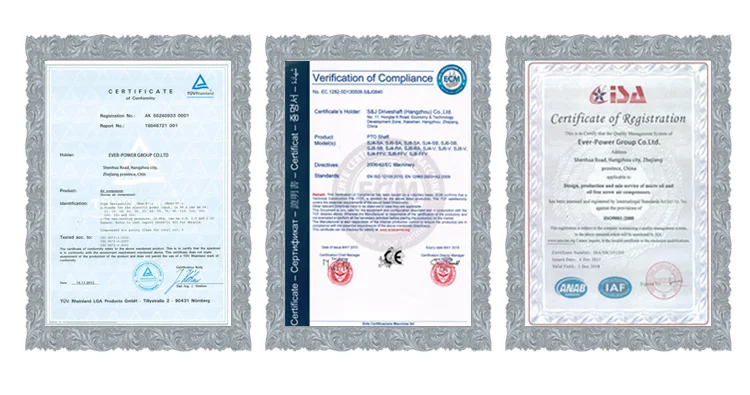
Item packaging

FAQ
About Hangzhou At any time-electricity group(HZPT):
Q: Are you investing firm or producer ?
A: HZPT team is composed in 3 factories and 2 abroad income cooperations.we are making vacuum pumps,air compressors and gearboxes.
Q: How lengthy is your supply time ? What is your conditions of payment ?
A: Usually it is thirty-forty five days. The time could range depending on the solution and the level of customization. For common
items,the payment is: thirty% T/T in advance ,harmony before shippment.,for tailored goods,50% downpaOur business is found in XiHu HangZhou Zhejiang Province. Tyment is asked for typically.
Q: What is the specific MOQ or price for your merchandise ?
A: As an OEM company, we can offer and adapt our products to a vast range of wants.Hence, MOQ and price tag may possibly significantly differ with depth dimensions, materials and further specificationswhen you spot orders,pleasure speak to us in progress to communicate all particulars.
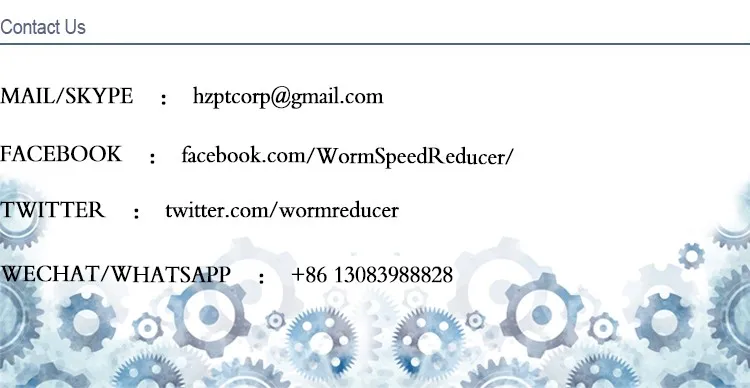







N made in China – replacement parts – in Chittagong Bangladesh Series Planetary Gearbox Transmission with 160b5 Flange with ce certificate top quality low price


We – EPG Group the bigge EPT Chain and agricultural gearbox manufacturing unit in China with 5 various branches. For far more information: Cell/whatsapp/telegram/Kakao us at: 0086~13083988828 13858117778 0571 88828
N Sequence Planetary Gearbox Transmission with 160B5 Flange
Technological info:
one. Ratio variety: 3.fifteen-9000
2. Enter energy: .25-55KW
3. Allow torque rang: ≤ 800000N. M
four. Output velocity: .425-445 r/min
five. Construction mode: Chance of flange, foot, or shaft mounting answers
Characteristic:
one. Broad and complete variety of N series for industrial programs
2. Reduced pace shaft style: Cylindrical with key, splined, hollow with shrink disc or splined hollow shaft
three. Rigid and specific nodular ca EPT iron casing
four. Lower sounds managing, large manufacturing top quality standard
5. High and reliable performance, load potential and reduced velocity shaft bearing
| Ratio | 3.15:1 to 9000:1 |
| Reduction Stages | up to 6 reduction phases in a single gearbox |
| Nominal Output Torque | up to 800,000N.m |
The use of unique products manufacturer’s (OEM) portion figures or emblems , e.g. CASE® and John Deere® are for reference functions only and for indicating merchandise use and compatibility. Our firm and the shown replacement components contained herein are not sponsored, approved, or manufactured by the OEM.



China manufacturer & factory supplier for NMRV in Merca Somalia series worm gear reducer gearbox electric RV gear motor 5D300GD-RV40 300W DC12V 24V With high quality best price & service

roller chains. Conveyor chains, engineered chains, silent chains, and tabletop chains are also obtainable. Other electrical power transmission items consist of pillow blocks, conveyor idlers, conveyor puHigher running temperatures can steadily “cure” and harden seal lips, producing them lose the overall flexibility essential to seal properly.lleys, travel shafts, gear racks, equipment reducers, gears, overrunning clutches, motor bases, pulleys, screw conveyors, shaft couplings, sheaves, pace reducers, sprockets, tapered bushings, tensioners, torque limiters, and common joints. Providers such as bearing reconditioning and repair, ball screw repair, customized contract machining, gearbox repair and overrunning clutch mend services are available. Roller chains can be utilised in conveyor and machinery production, industrial processing, equipment rebuilding, squander h2o, sand and gravel, resource and die, metal, metals and scrap processing industrial purposes.In 2000, EPG took the guide in getting ISO14001 environment administration certification and thereafter passed the inspection of clean creation and recycling economy, profitable the title of “Zhejiang Inexperienced Business”.
Overview
Rapid Information
- Relevant Industries:
-
Producing Plant
- Brand name Identify:
-
OEM
- Item NO:
-
SYF
- Product Variety:
-
NMRV
- Item Keywords and phrases:
-
nrv worm gearbox,nrv worm gear speed reducer,nrv worm gear
- Coloration:
-
Blue
- Merchandise title:
-
Worm Gear Screw Jack
- Content:
-
Aluminium Alloy
- Application:
-
Device Instrument
- Bearing:
-
NSK
- Certification:
-
ISO9001
- Ratio:
-
five-a hundred
Packaging & Shipping and delivery
-
Lead Time
: -
Quantity(Parts) 1 – five hundred >500 Est. Time(times) twenty To be negotiated
On-line Customization
Mounting Dimension
The goods are broadly used in the generating equipments of all varieties of industries within and outside the house China. They are the ideal selections for presently modern day amenities of mechanical lowering generate control to understand big twisting distance, big gear ratio, little noise, large effectiveness and security.
|
Model: |
NMRV025, 030, 040, 050, 063, 075, 090, a hundred and ten, a hundred thirty, 150 |
|
Ratio: |
one:5,7.5,ten,15,20,twenty five,thirty,40,fifty,sixty,80,one hundred |
|
Color: |
Blue, Silver Or On Consumer Ask for |
|
Noise: |
reduced noise (<50DB) |
|
Benefit: |
Efficient and secure running |
|
Substance: |
Housing: Die-Solid Aluminum Alloy |
|
Worm Equipment-Bronze 9-4# |
|
|
Worm-20CrMnTi with carburizing and quenching, surface harness is 56-62HRC |
|
|
Shaft-chromium metal-forty five# |
|
|
Packing: |
Carton and Wooden Scenario |
|
Bearing: |
C&U Bearing |
|
Seal: |
NAK SKF |
|
Certification: |
ISO9001,CE,3C,OEM |
|
Guarantee: |
12 months |
|
Enter Energy: |
.06kw, .09kw, .12kw, .18kw, .25kw, .37kw, .55kw, .75kw, 1.1kw, 1.5kw, 2.2kw, 3kw, 4kw, 5.5kw, 7.5kw, 11kw, 15kw |
|
Usages: |
Industrial Equipment: Food Things, Ceramics,CHEMICAL,Packing,Dyeing, Woodworking,Glass. |
|
IEC Flange: |
56B5, 56B14, 63B5, 63B14, 71B5, 71B14, 80B5, 80B14, 90B5, 90B14, 100B5, 100B14, 112B5, 112B14, 132B5, 160B5 |
|
Lubricant: |
Synthetic & Mineral |
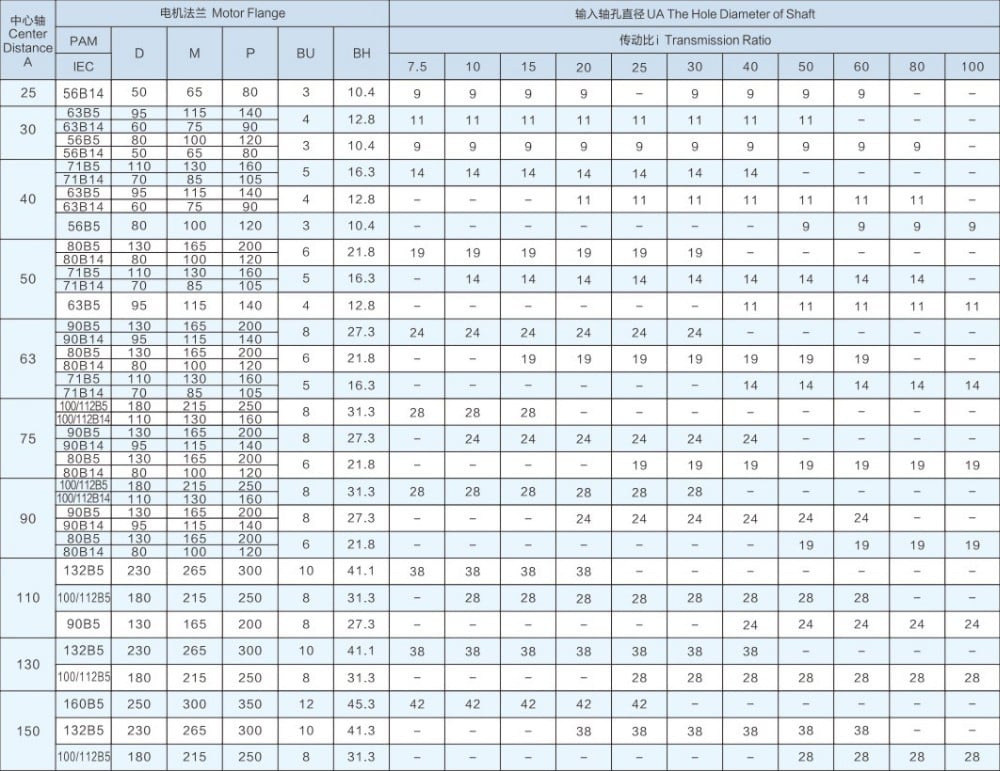

Product Deseription
Single Action Worm Gear Reducer.
The reducer which model is twenty five~90 made of Aluminum alloy die-casting box,good hunting in appearance,compact in framework,rust proofing on area and tiny volume to save mounting room.
The reducer model of one hundred ten~150 is created of solid iron which casted with Aluminum mould.It`s good looking and solid, and can be used via the setting of multi-azimuth.
Good radiating characterstic sales opportunities protected and trustworthiness,and high performance for using.
The strong capacity of loading ensure stable transmission,make considerably less vibration and sound.
Differs of connecting structure for power input and torque output meet up with distinct demand-meritsthe design of box define and the set of foot hole with very good versality is apt to numerous types of mounting.
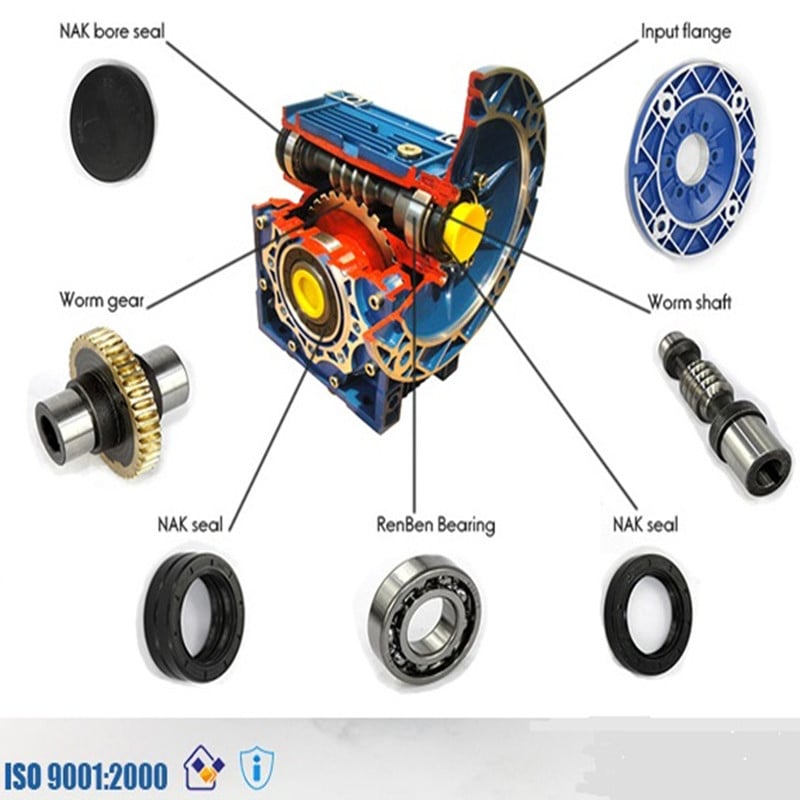

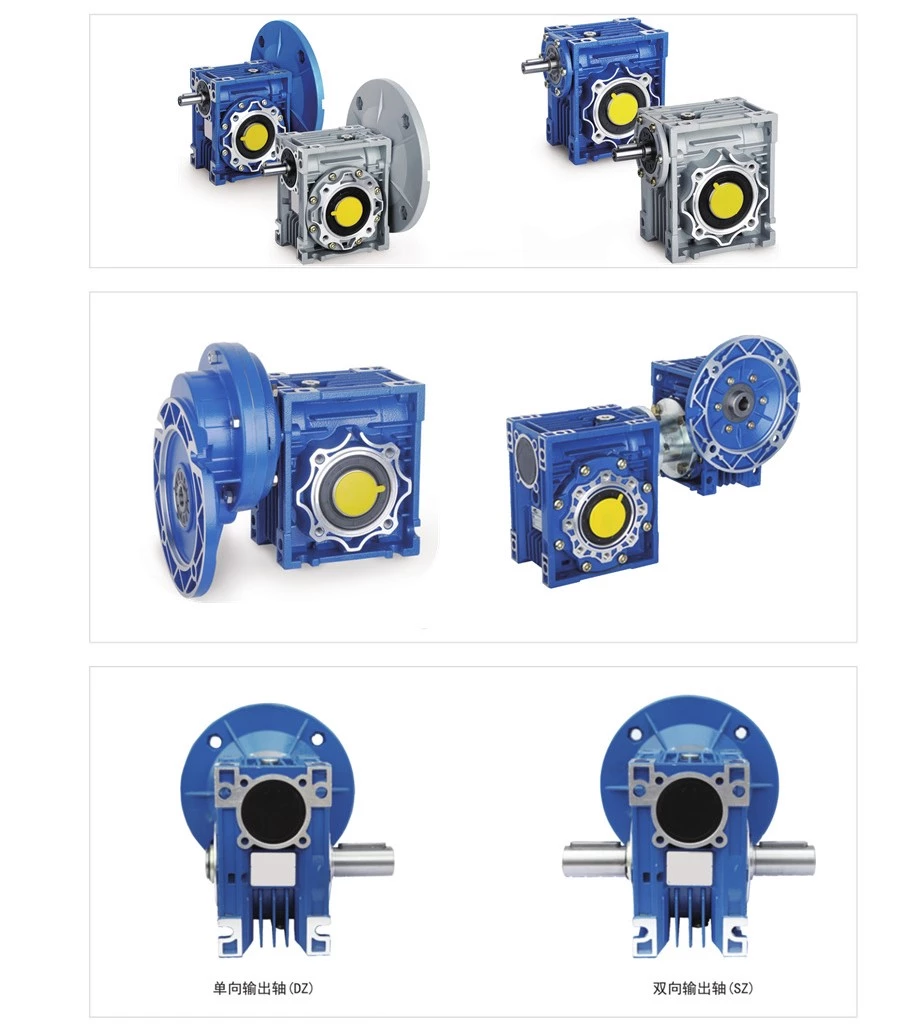

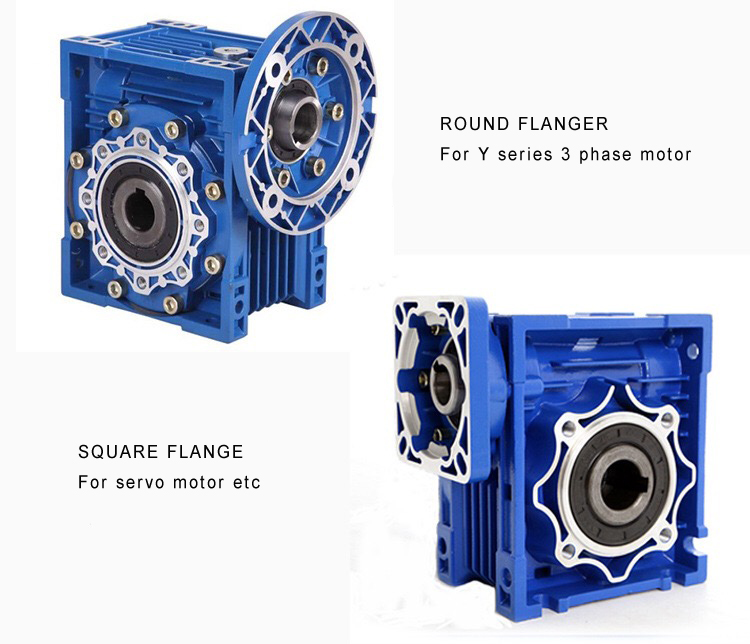

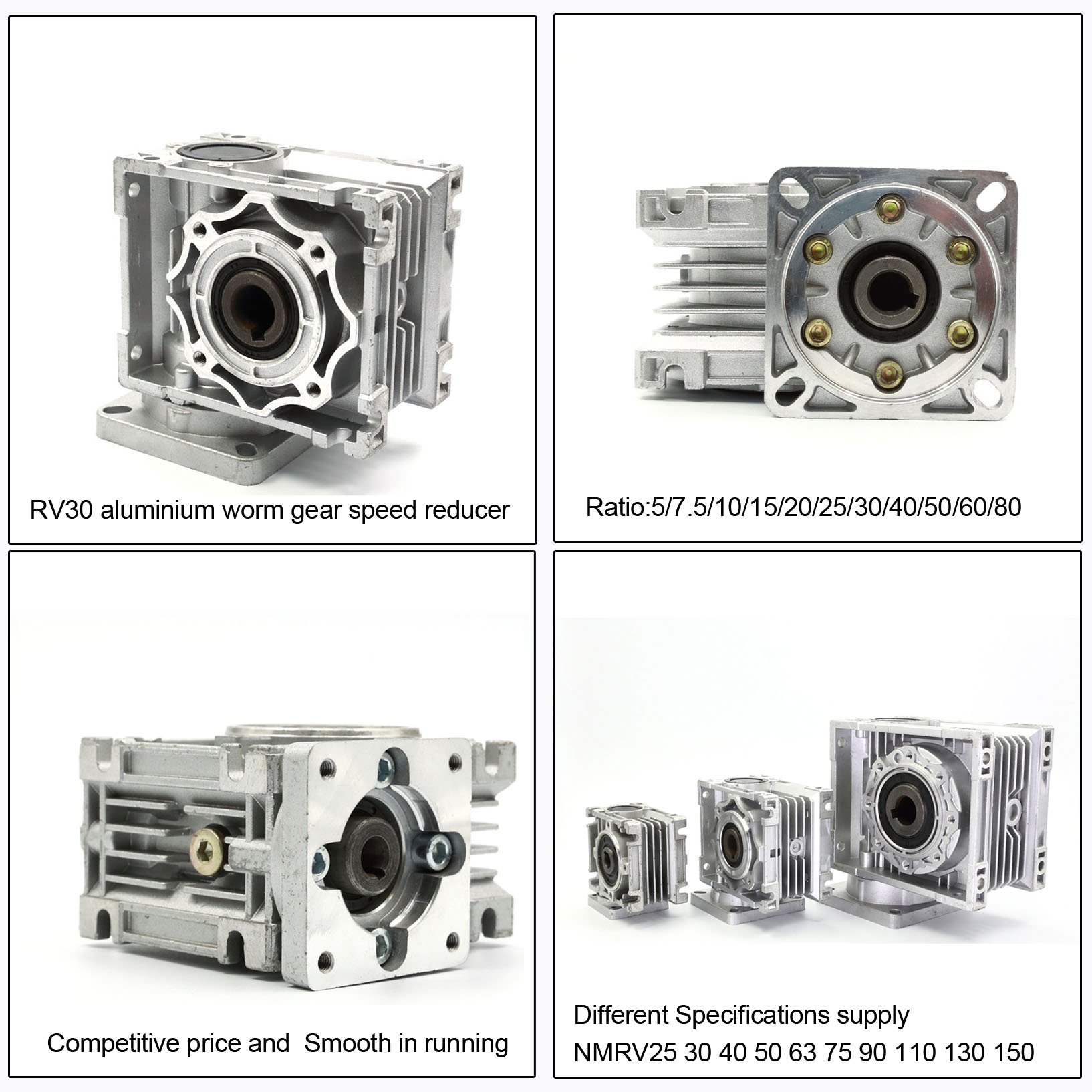

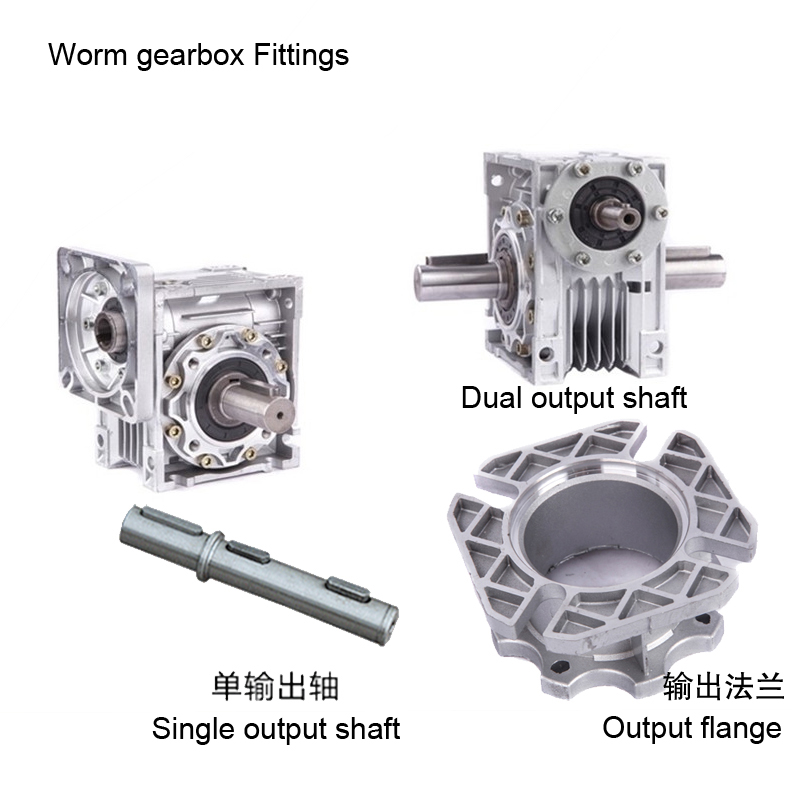



The NMRV worm gearbox is new technology of items by our factory on the basis of perfecting WJ sequence products with compromise of sophisticated technology each at home and overseas.It is apprearance adopts superior sq. box structure.It’s outer entire body is made of high good quality aluminium alloy die casting into forming.It really is small in volume,light-weight fat,substantial in radiating performance,huge in output torque,easy in operating and minimal sound.It is suitbale for all positions.
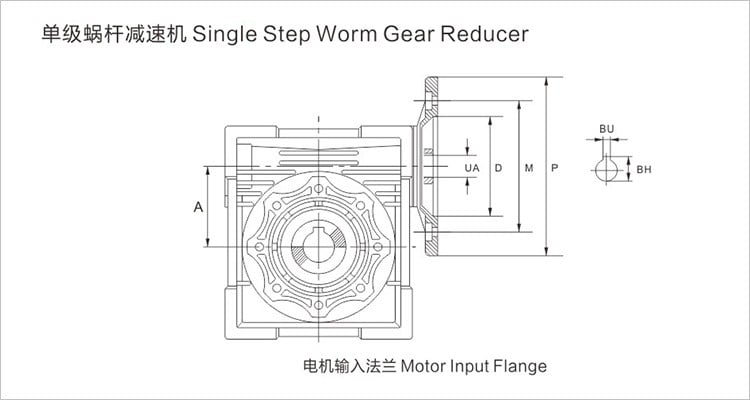

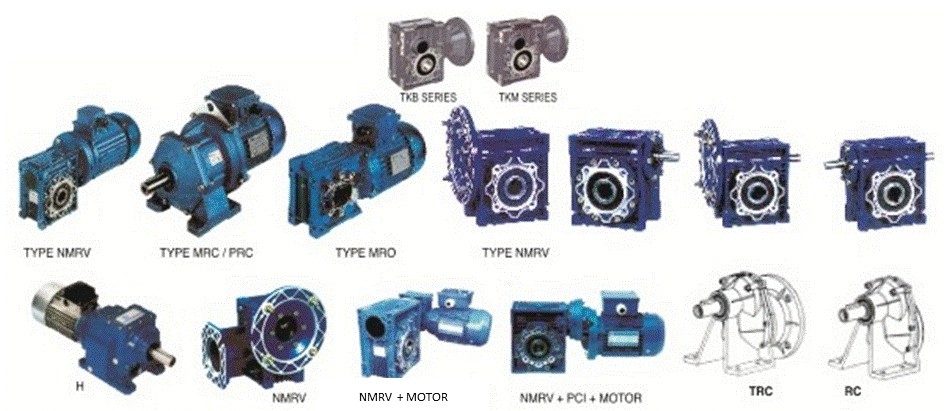



Method for model chosen
You should recognize the subsequent at initial in purchase to delect the design of RV pace reducer properly.
– Loading problem
– Pace scope or ratio in application
– Functioning situation and surroundings
– Installation space
Business profile
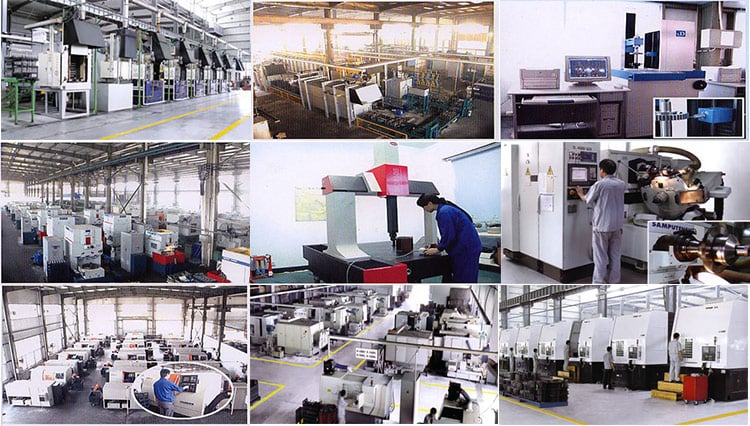

HangZhou EPT Team – a single of the biggest gearbox producer in China – Electromechanical Amenities Co. Ltd
HangZhou EPT Team – a single of the largest gearbox manufacturer in China – Electromechanical Gear Co., Ltd.is a reward organization integrating advancement, layout, manufacturing and sales,Principal marketing goods consist of reducer motor,water pump,design equipment and elements,bearings,components and electrical gear,plastic goods,Labour security equipment.Our organization always comply with the operation concept which is made up of men and women-oriented, innovation as the soul,be geared up for hazard in instances of peace, unremitting……
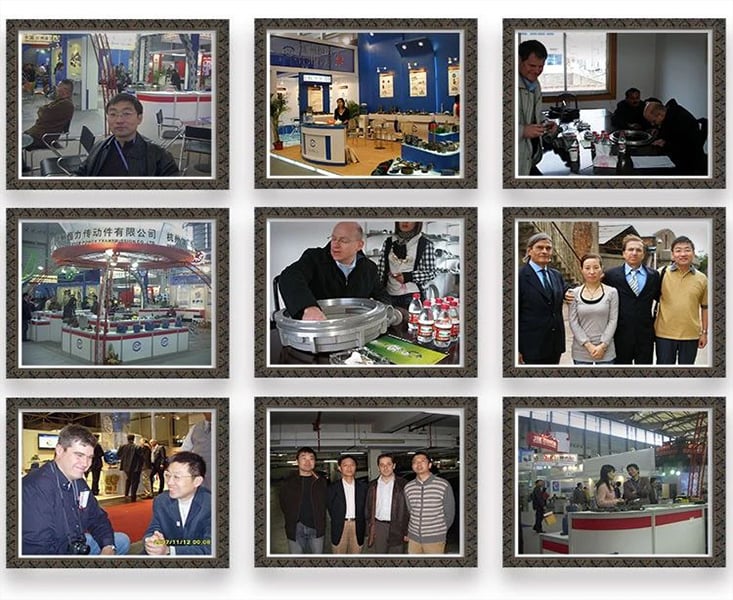

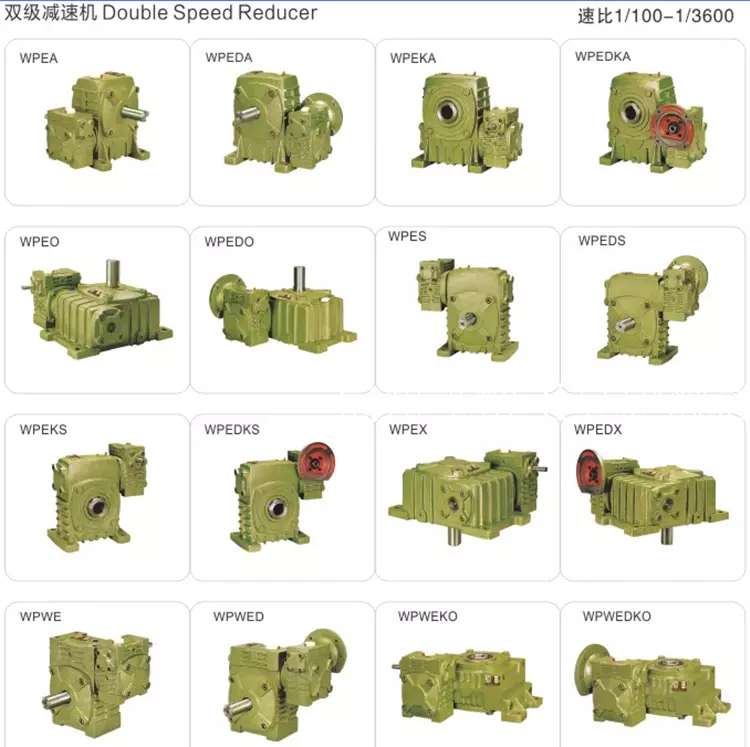

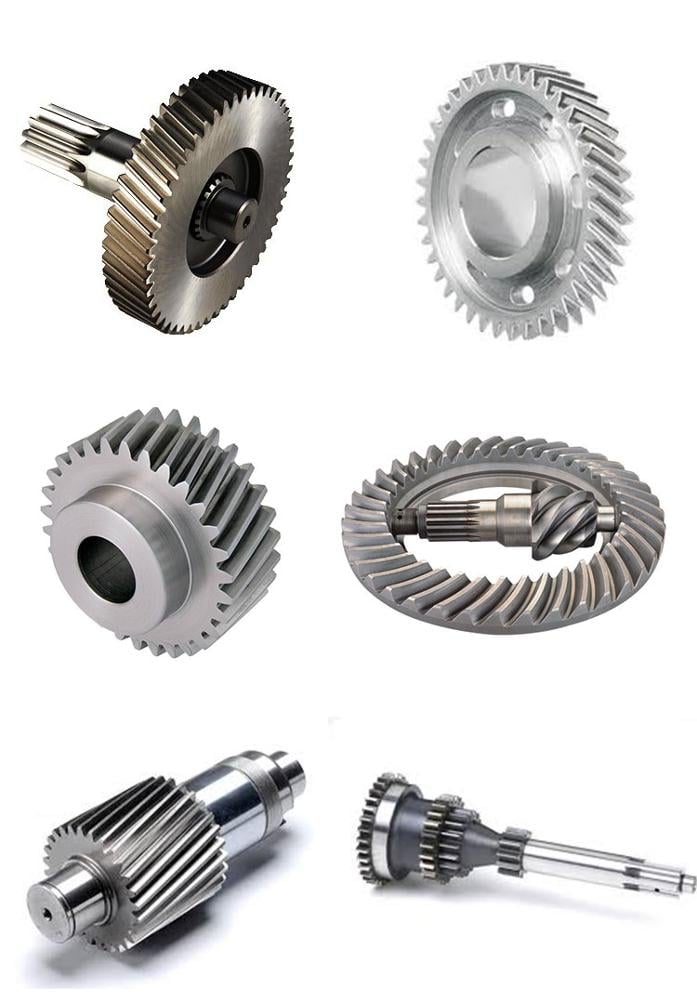



Software region


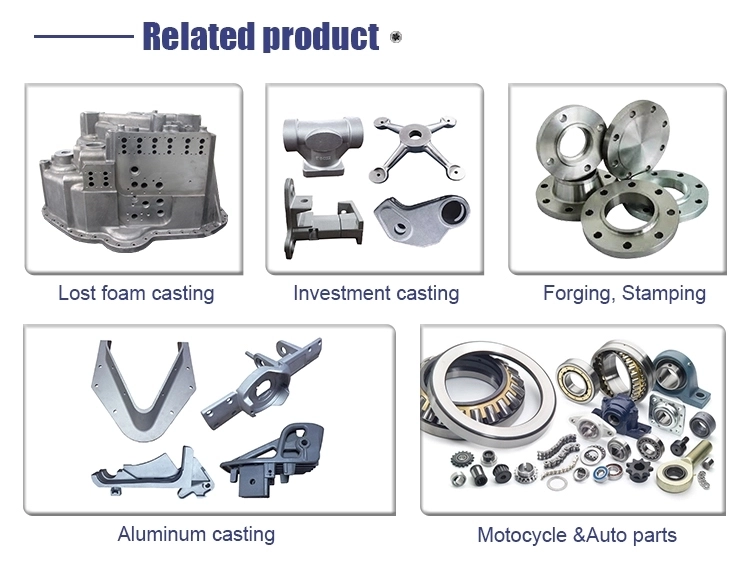

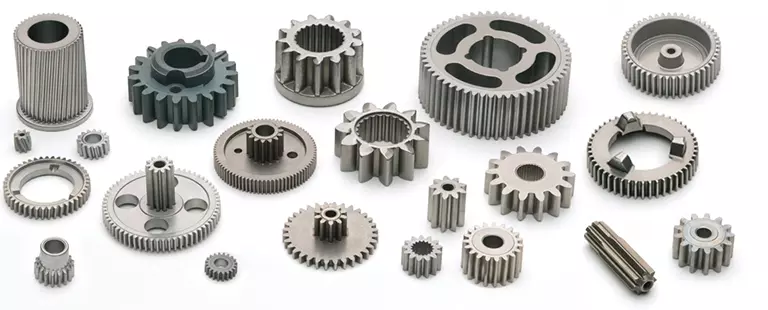

Certifications


Detailed Photos




Packing & Delivery


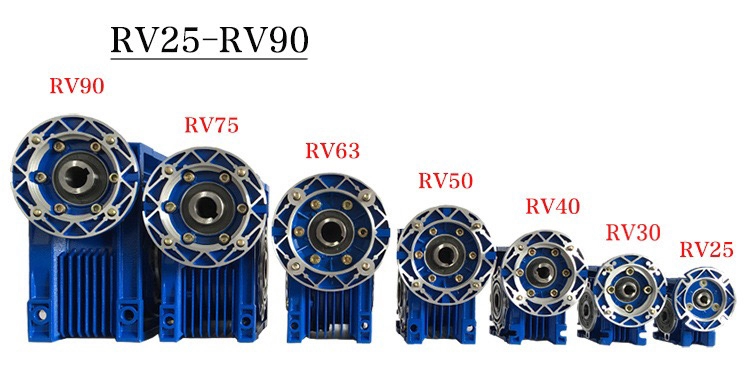

|
Packaging |
|
|
Size |
500 (L) * 500 (W) * 400 (D) |
|
Excess weight |
1.2 T |
|
Packaging Particulars |
The standard package is wood box(Measurement: L*W*H). If export to european international locations,the wood box will be fumigated.If container is also tigher,we will use pe movie for packing or pack it according to buyers unique ask for. |
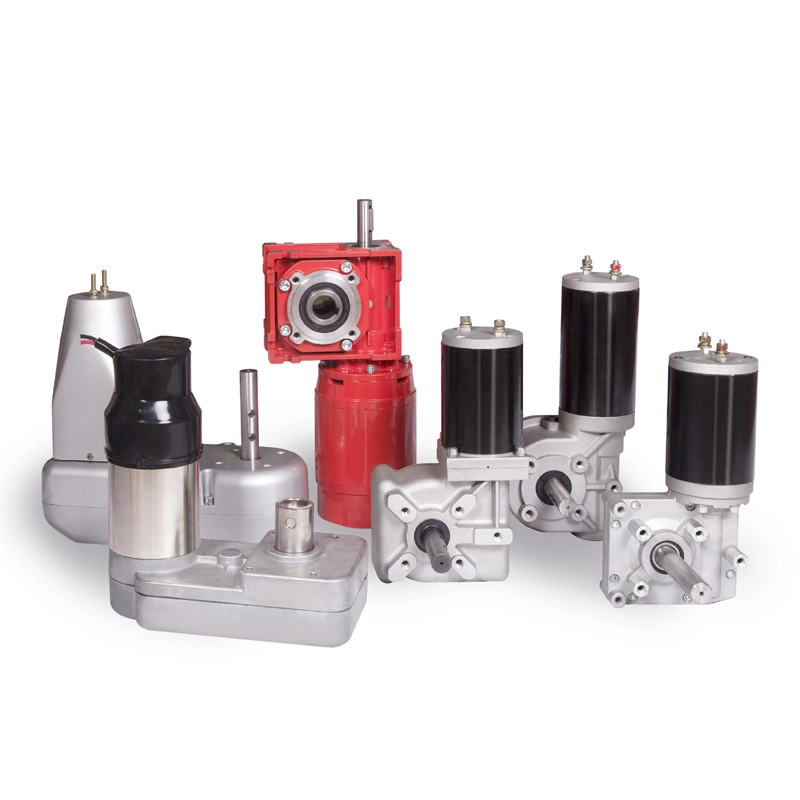

|
Packaging |
|
|
Dimensions |
five hundred (L) * 500 (W) * four hundred (D) |
|
Excess weight |
1.2 T |
|
Packaging Specifics |
The typical bundle is wooden box(Measurement: L*W*H). If export to european countries,the wooden box will be fumigated.If container is also tigher,we will use pe movie for packing or pack it in accordance to consumers unique request. |
FAQ
Q1: Are you investing organization or company ?
A: We are a company in ZheJiang China.welcome to our manufacturing facility to have a visit.
Q2: How we choose types and requirements?
A:You can email us the series name & code (for case in point: WJ series worm gearbox) as properly as requirement specifics, such as motor power, output velocity or ratio, service factor or your software…as much knowledge as achievable. If you can supply some pictures or drawings, it is betterOnce the PTO has started to electrical power the attachment, steadily enhance the throttle till you achieve the running pace. The typical managing RPM (revolutions for each minute) for a tractor mounted PTO is 540 RPM, though there are tractor models that rev larger. Always refer to your certain tractor model for instructions prior to first-time use..
Q3: How is your cost? Can you offer any price reduction?
A: We will give the very best value we can base on your demands and the portions.
This fall: How lengthy need to I hold out for the comments following I send the enquiry?
A: Inside of twelve hours.
Q5: What is your item warranty period?
A:We supply 1 12 months warrIt is our intention to provide a huge selection of good quality items at affordable prices, supply the ideal provider for consumers happy and contribute to our ongoing advancement. anty given that the vessel departure day remaining China.
Q6: What industries are your gearboxes currently being utilized?
A:Our gearboxes are extensively used to metallurgical tools, mining equipment, automation tools, foodstuff equipment, packaging tools, tobacco gear and so on.
Speak to us
Cell: +86-13083988828 we chat # or 0086-571-88220971 (WeChat)
E-mail:hzptcorp (a) gmail.com
Fox:+86-571-88220972
Incorporate:No.789 ShenHua Road, , XiHu District, HangZhou, ZheJiang, China
HangZhou EPT Team – 1 of the biggest gearbox company in China – Electromechanical Services Co. Ltd.






